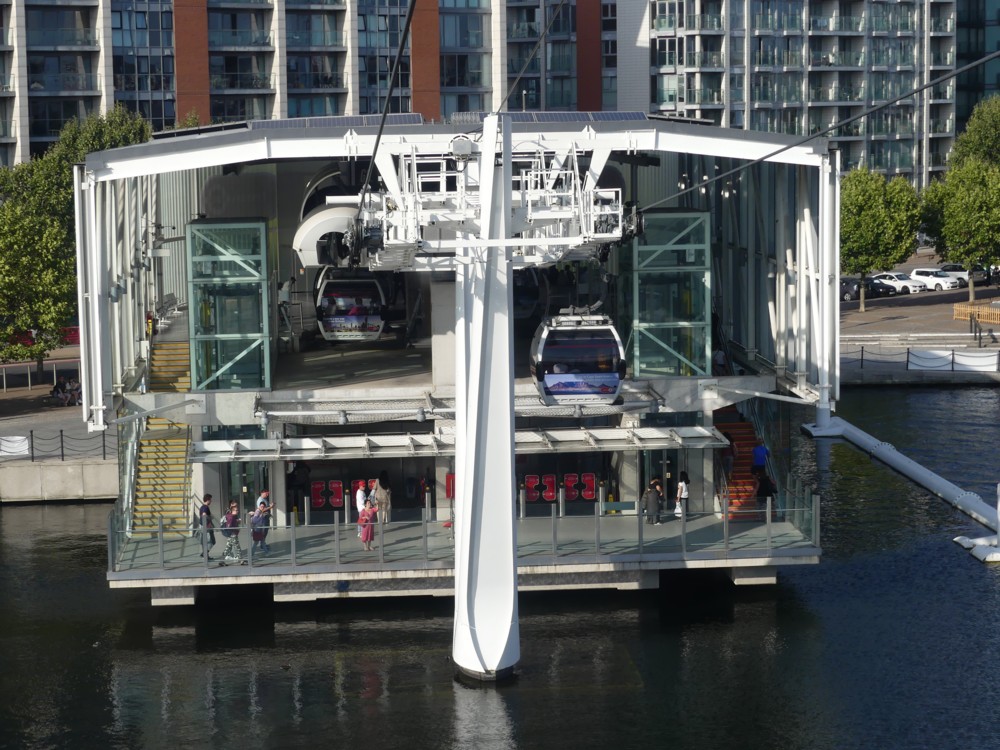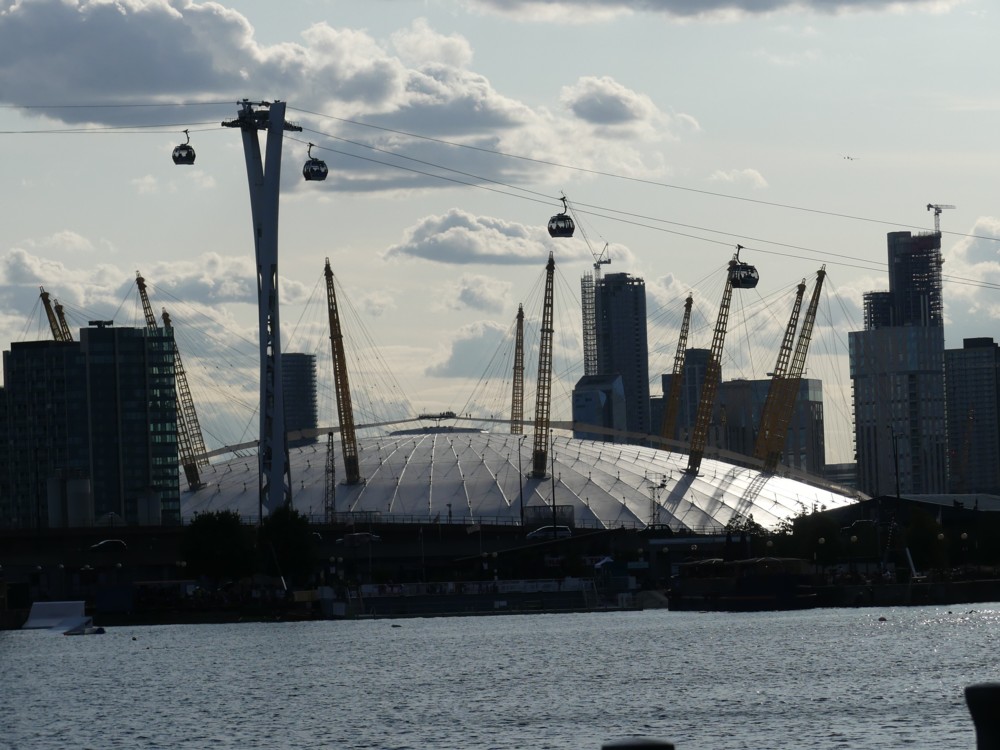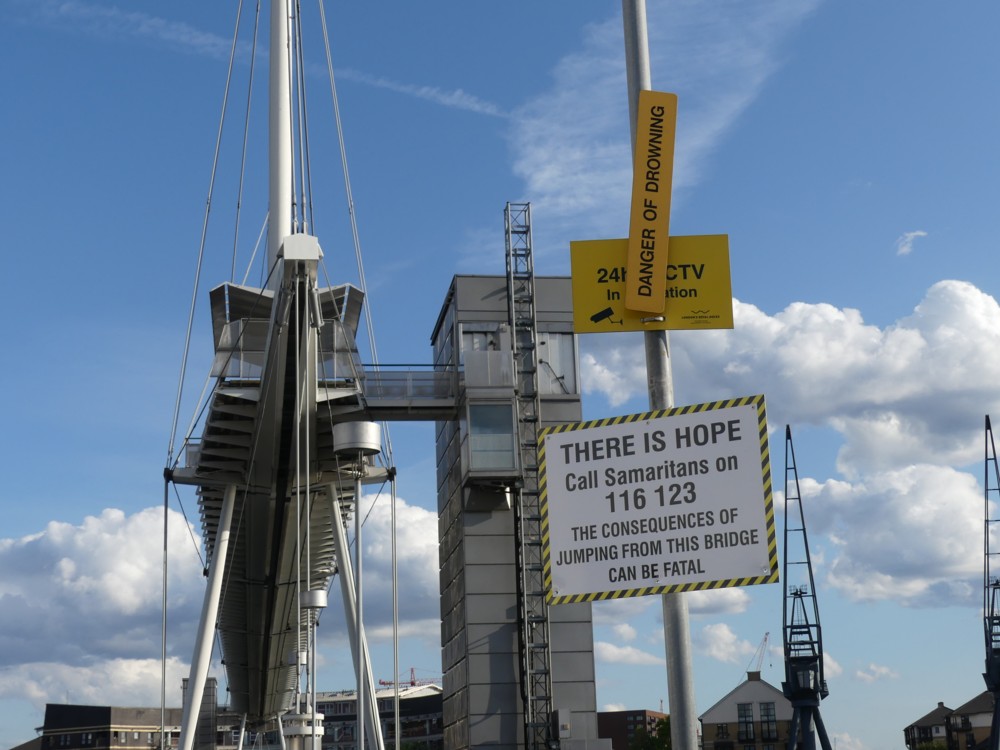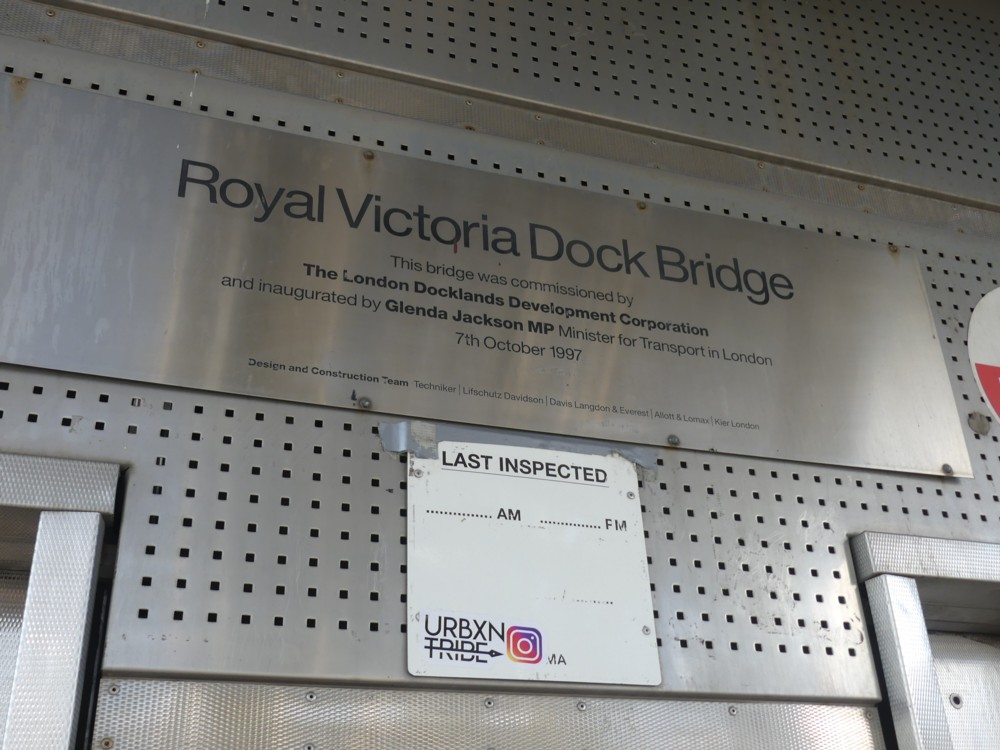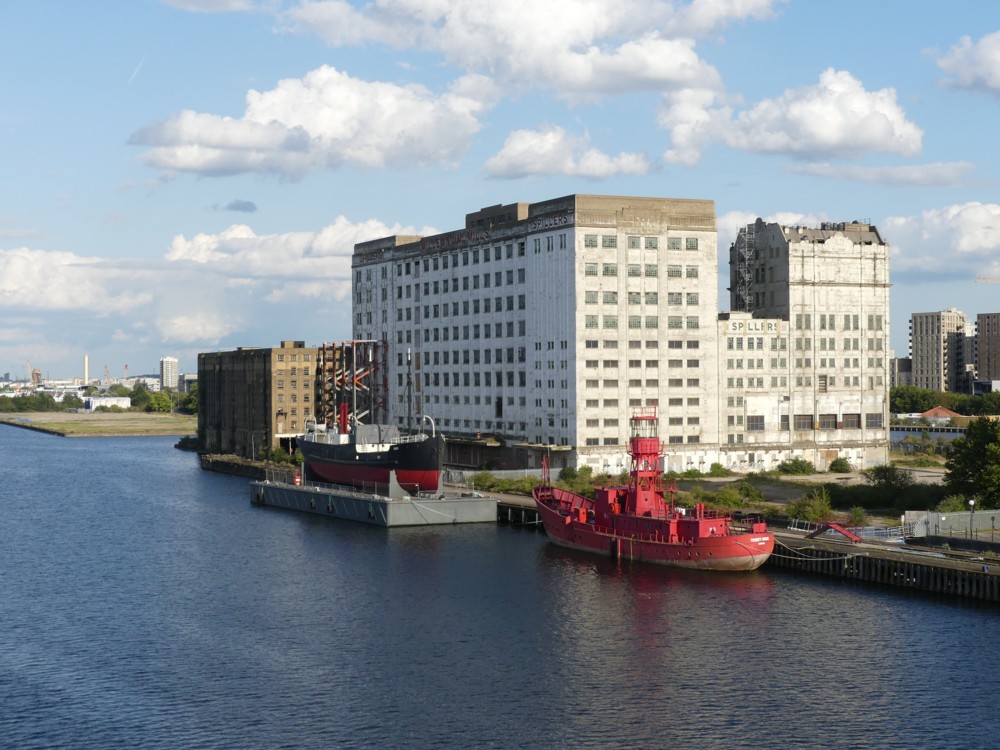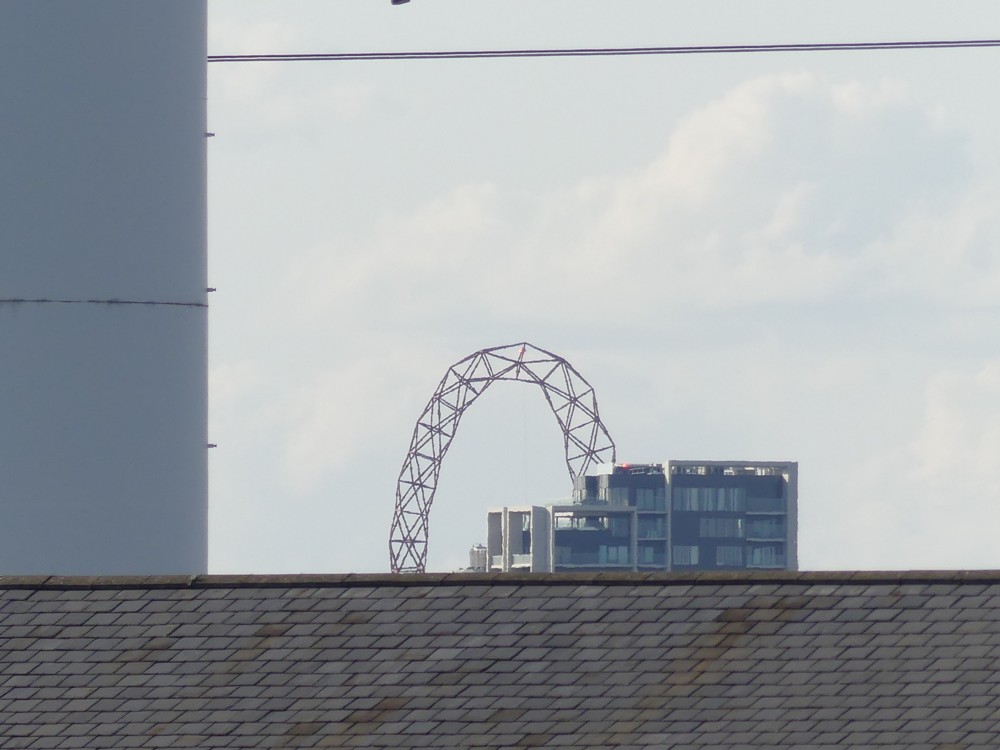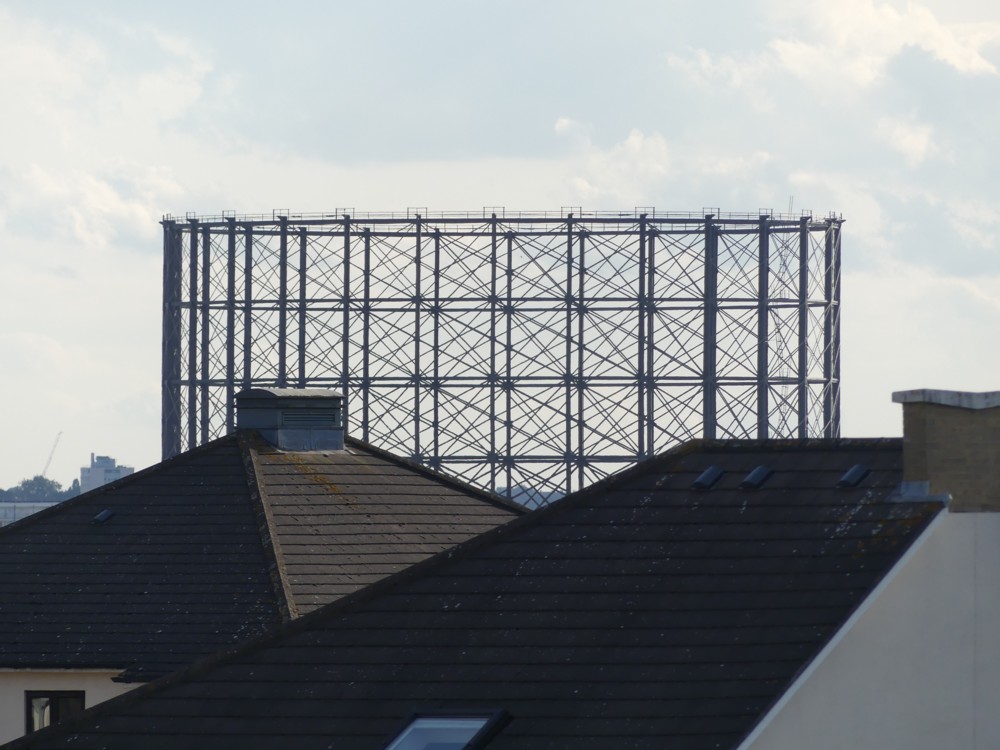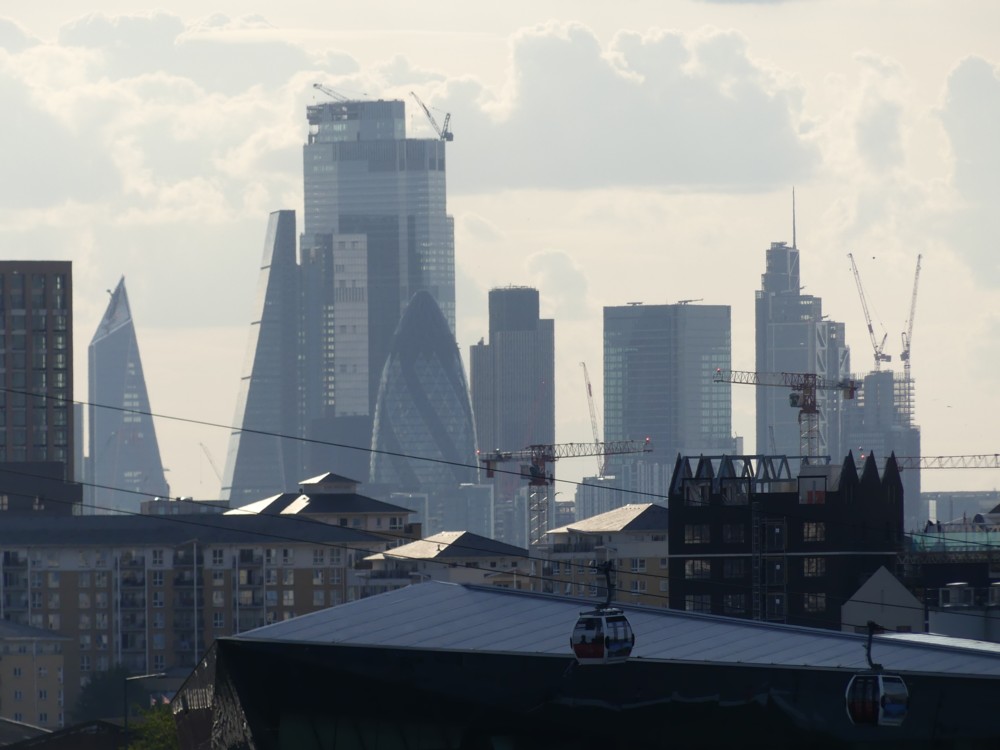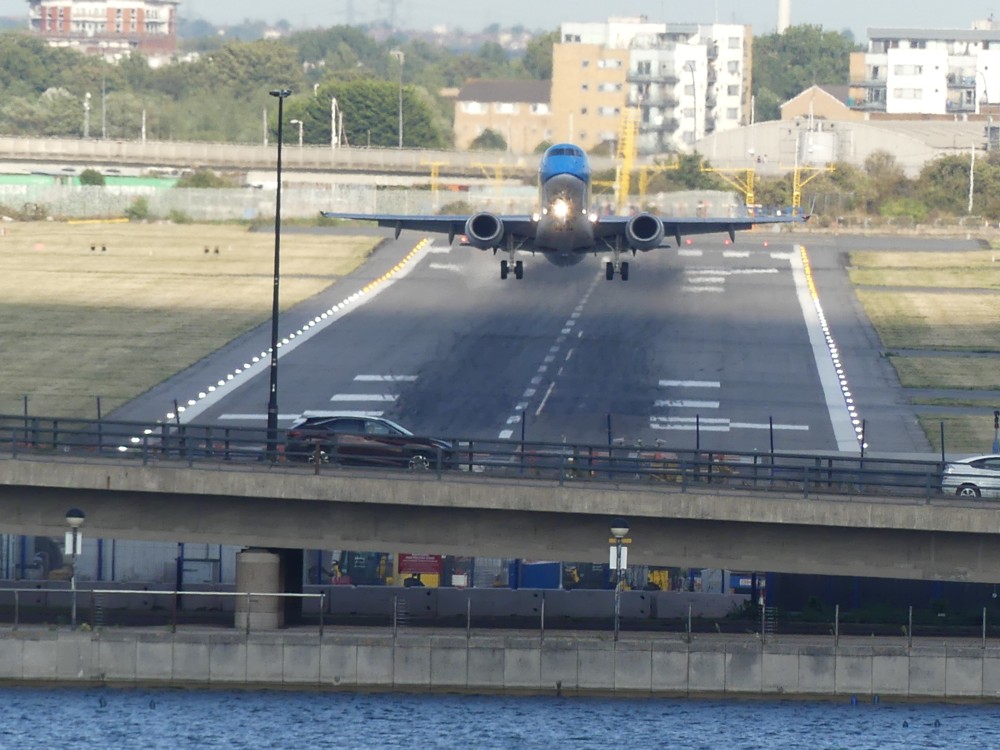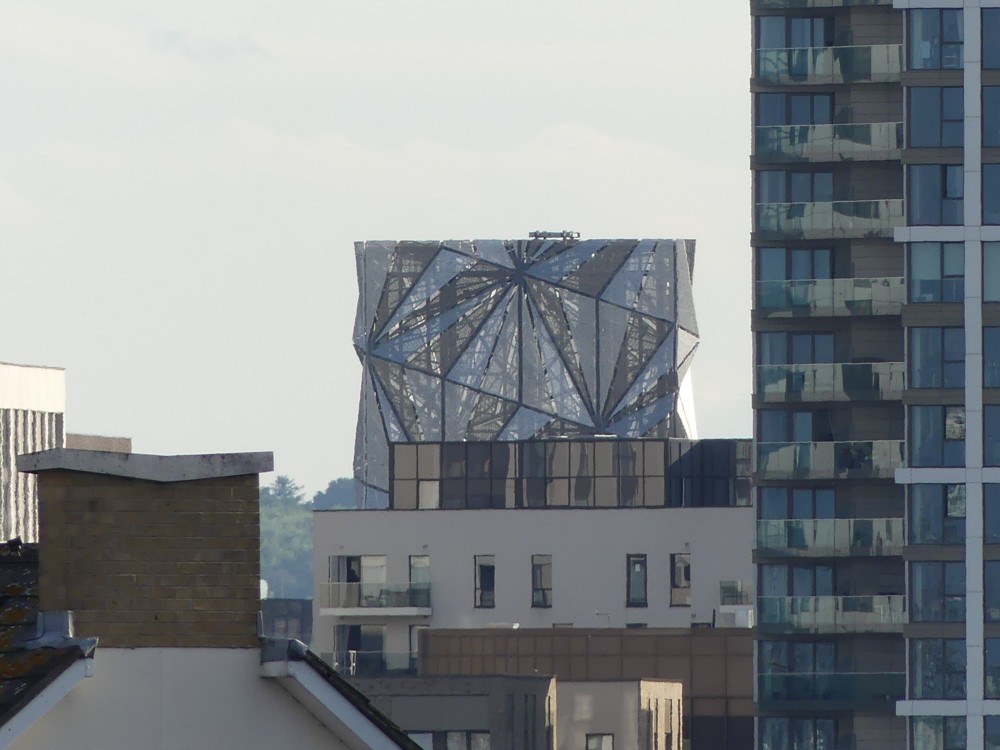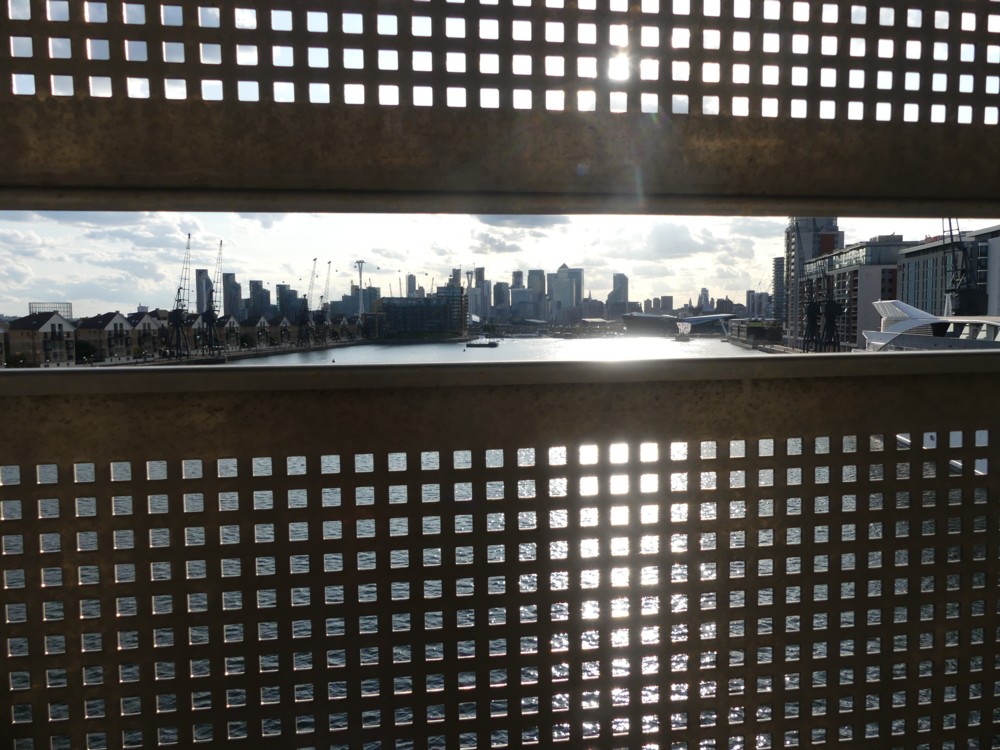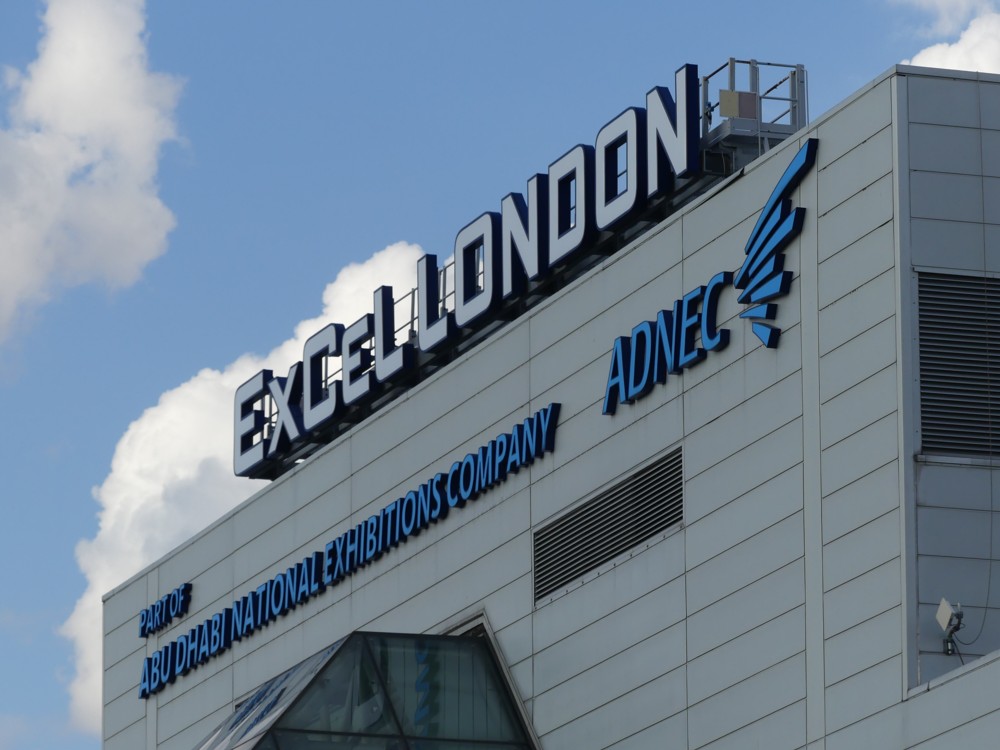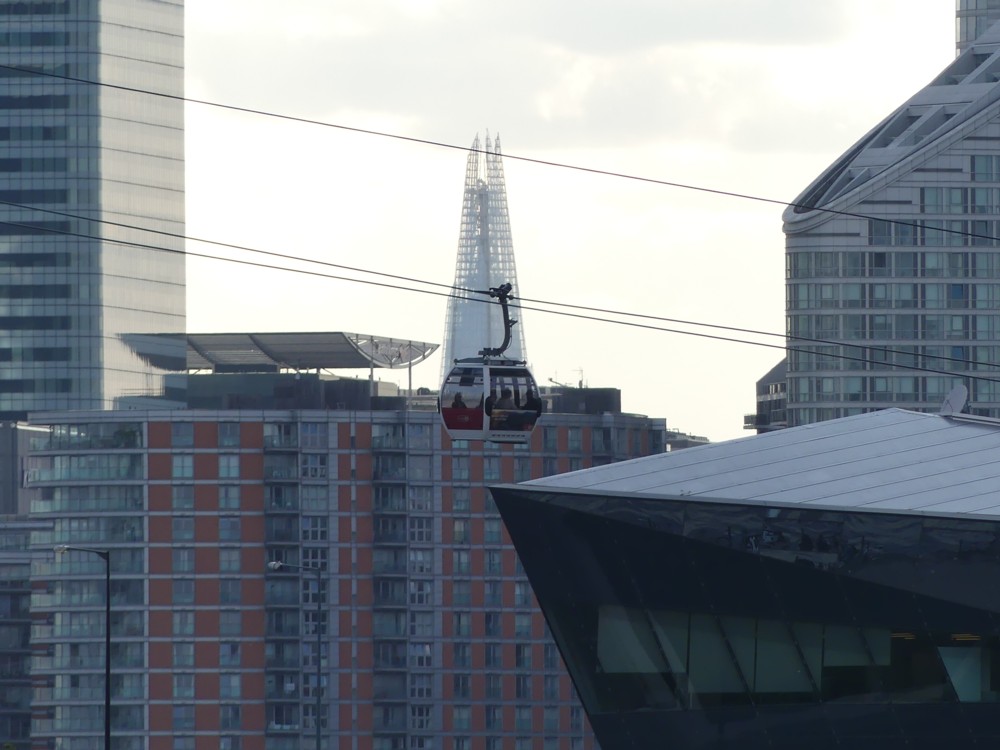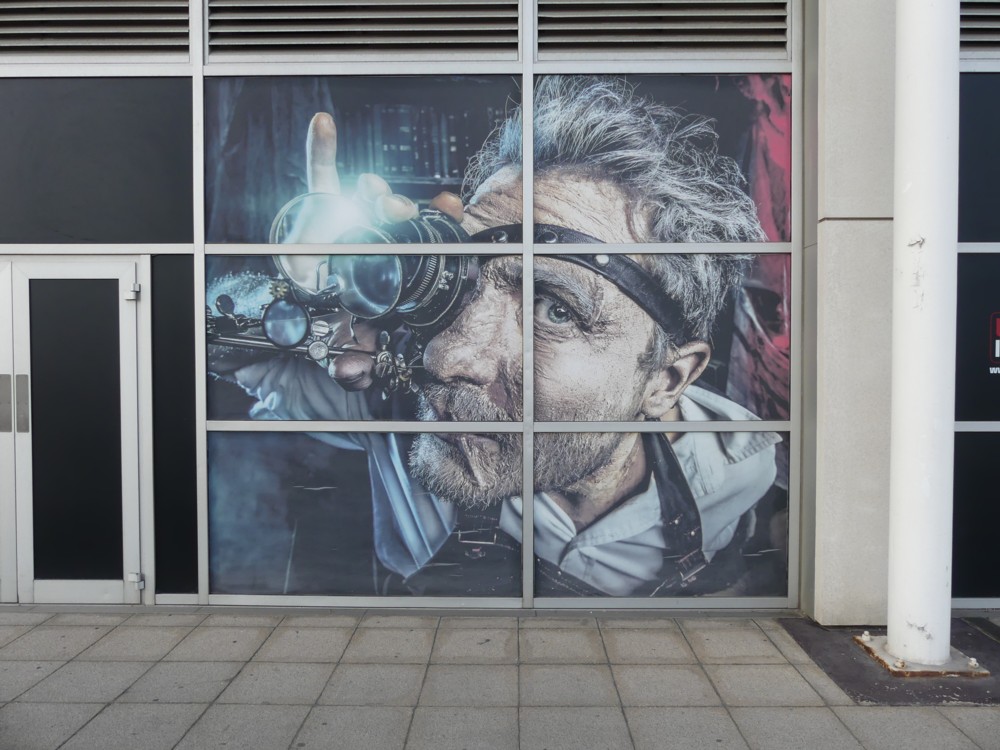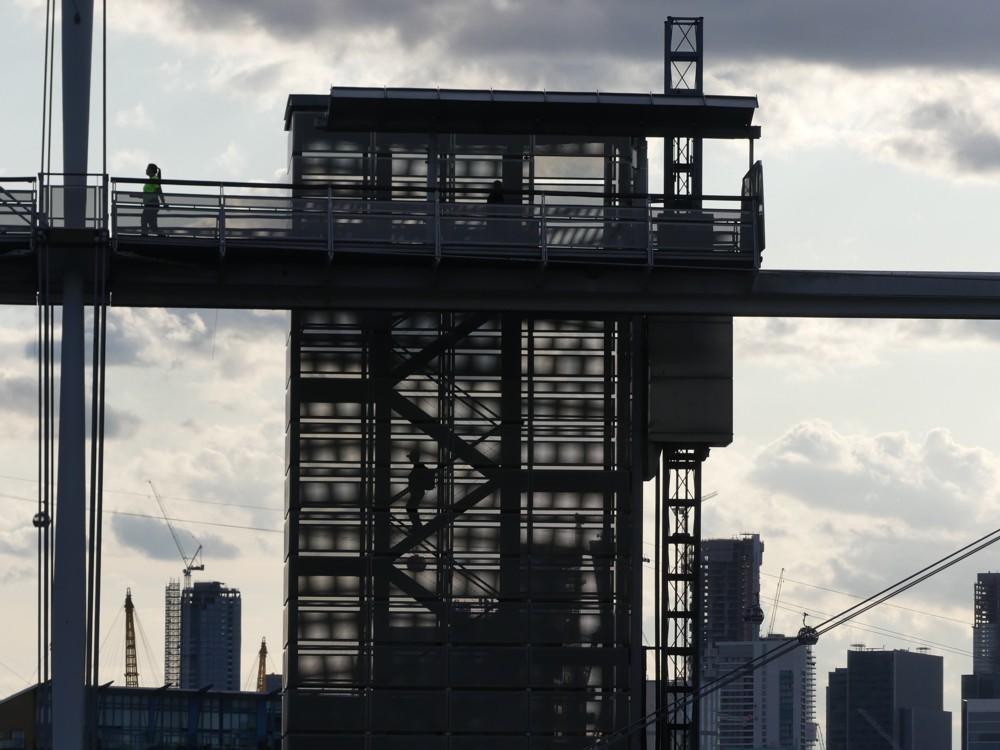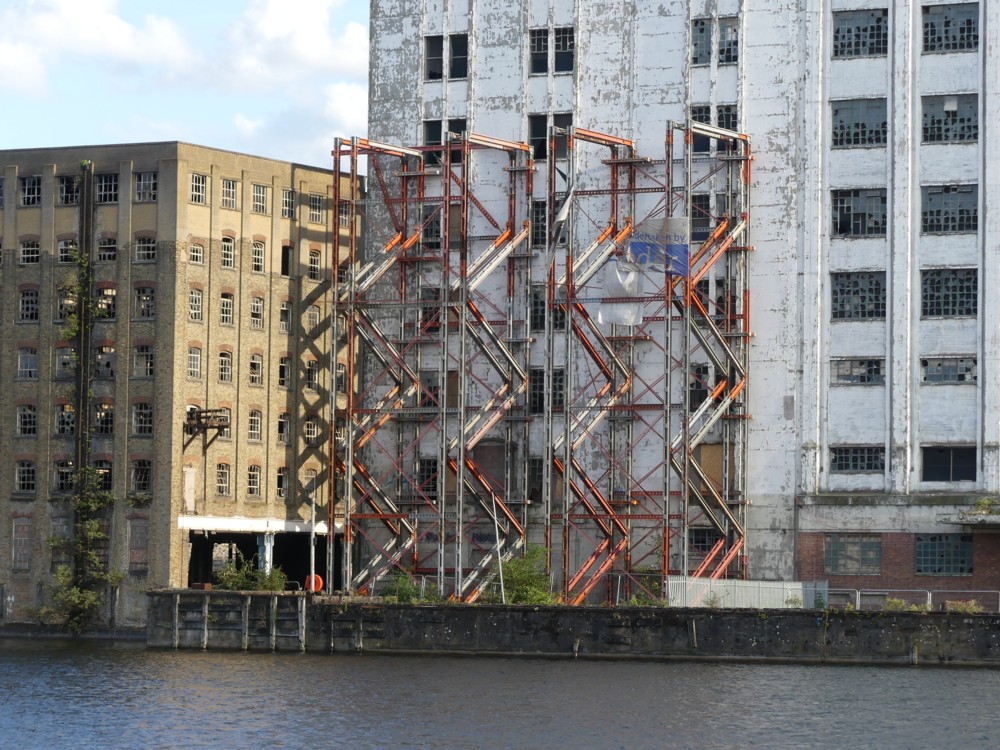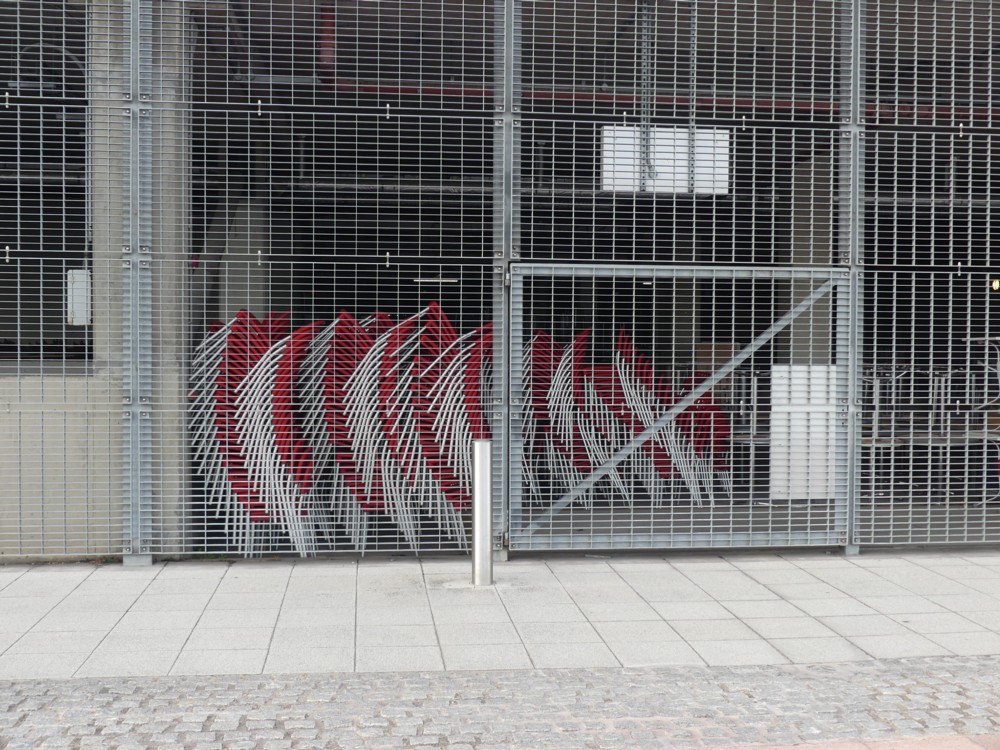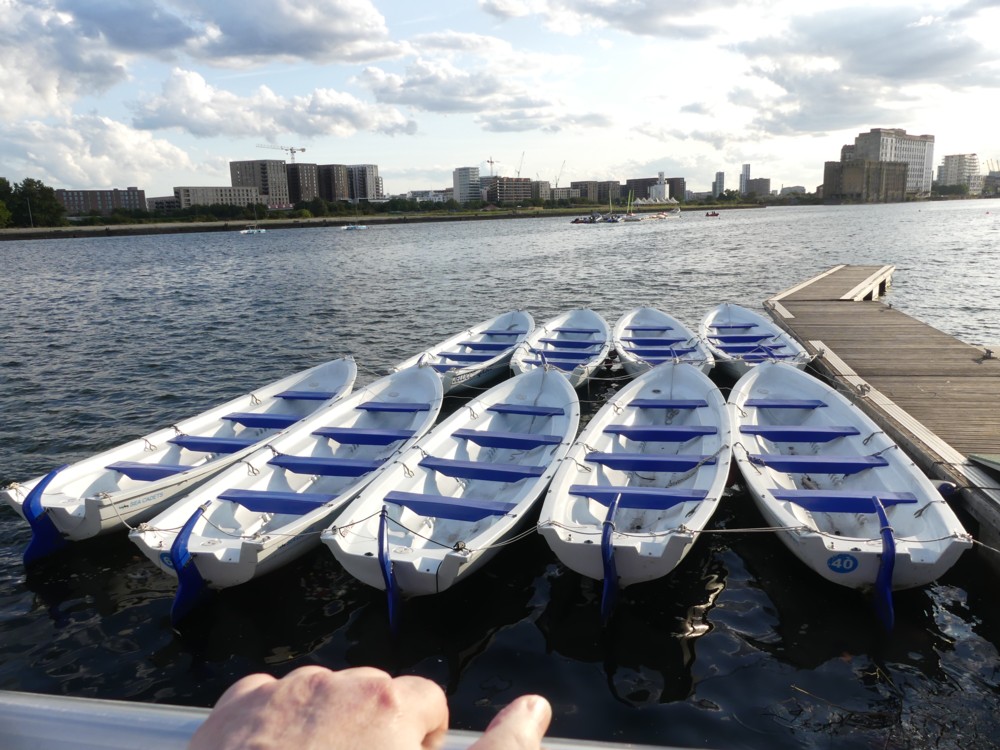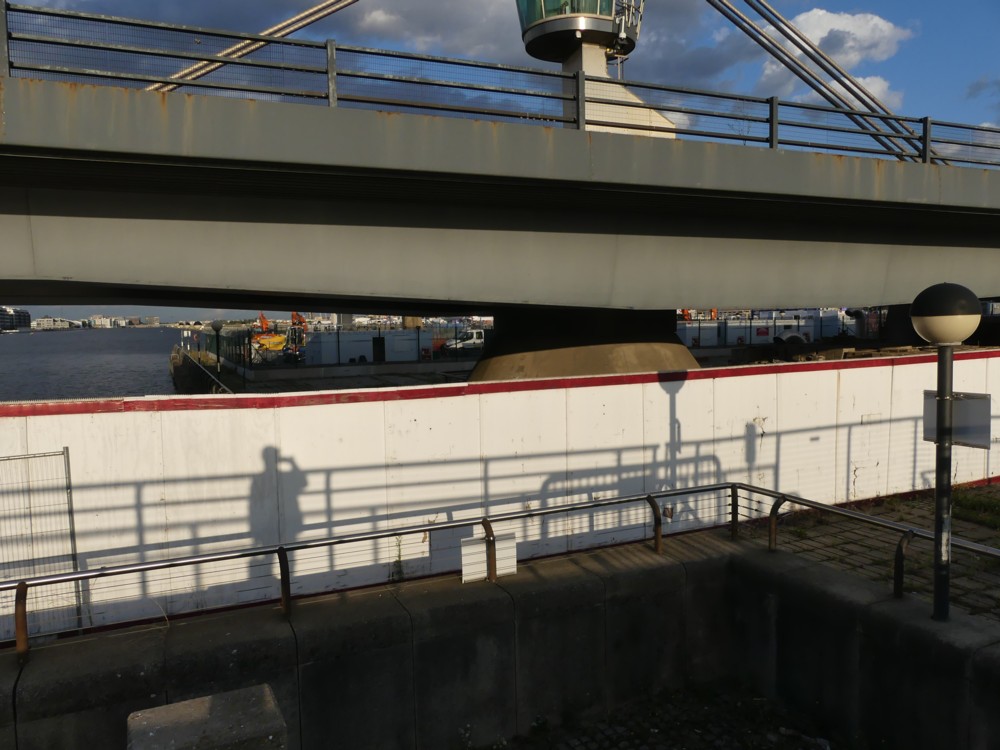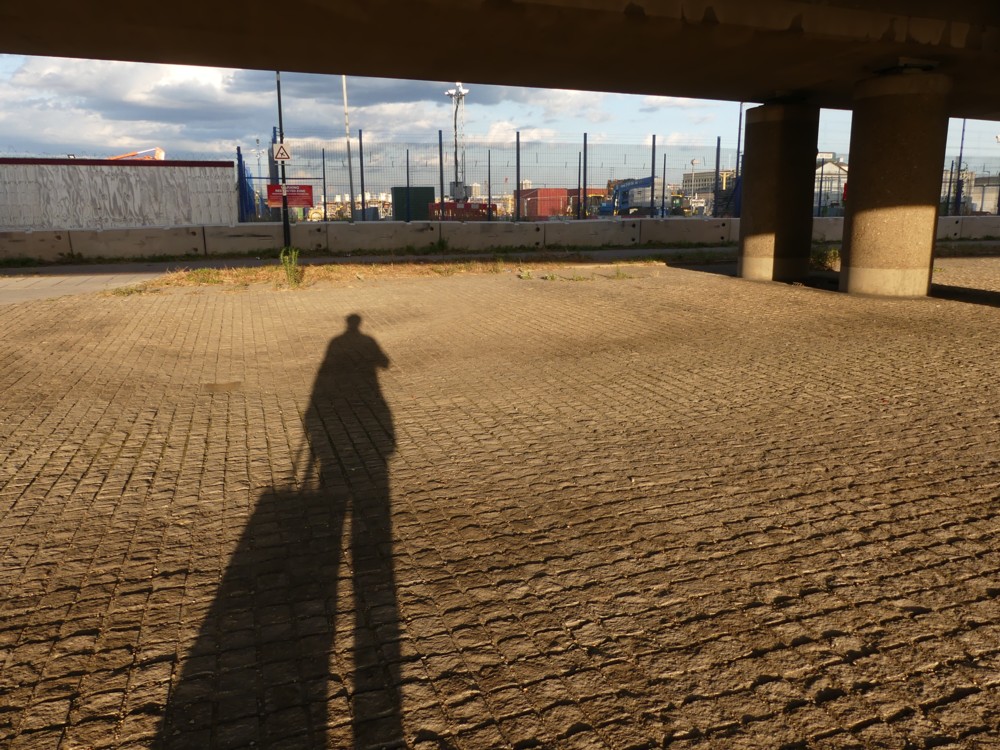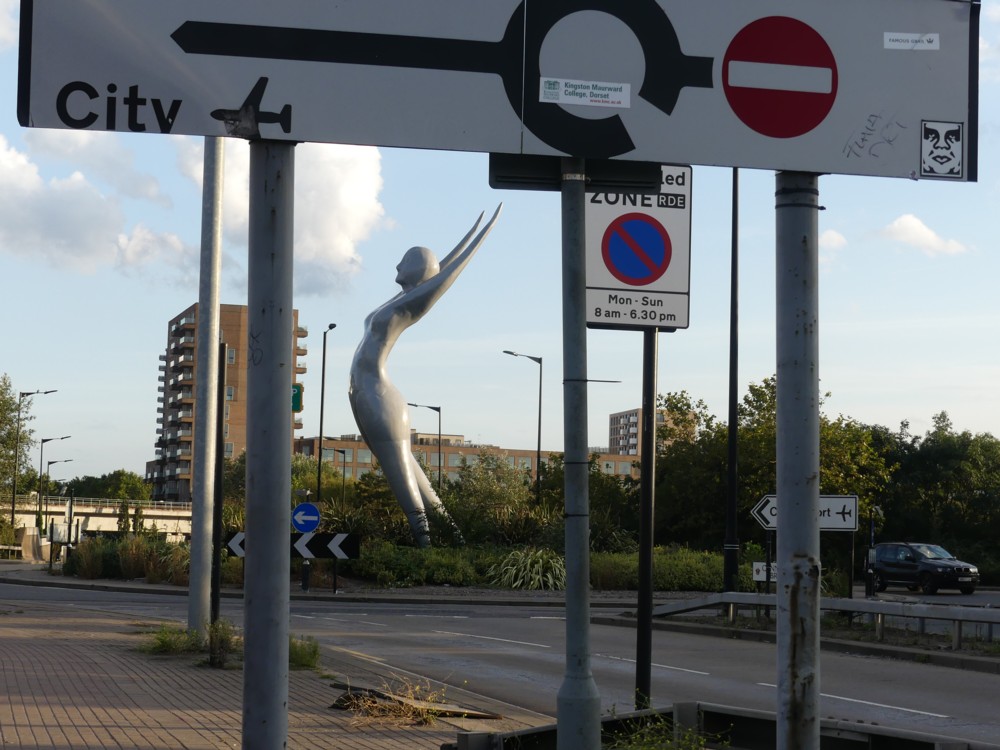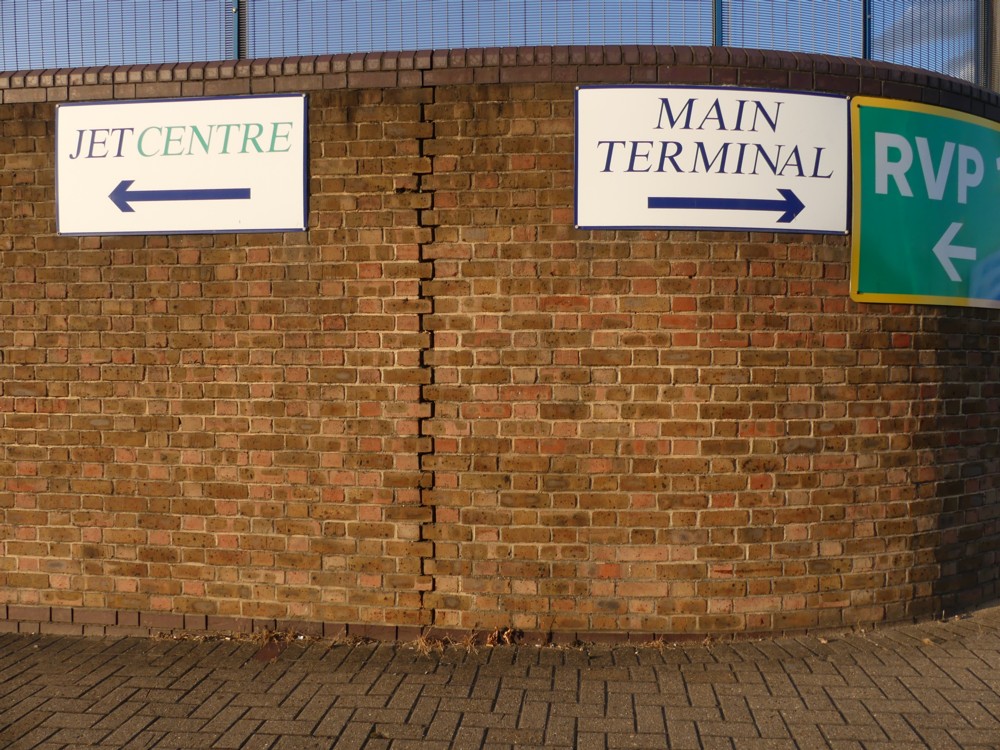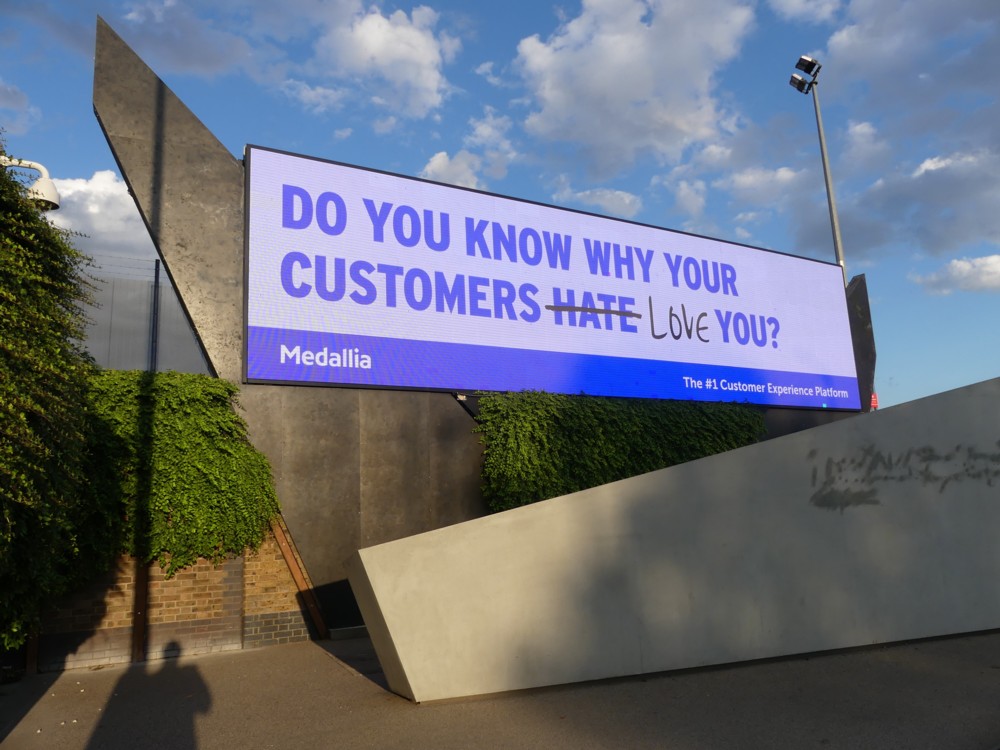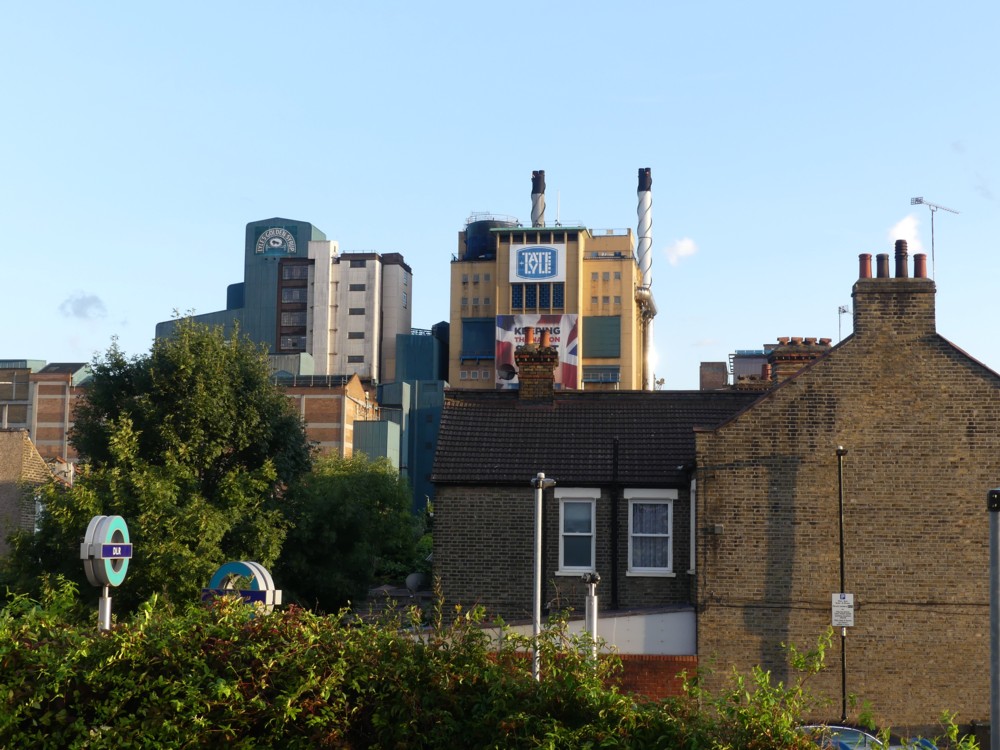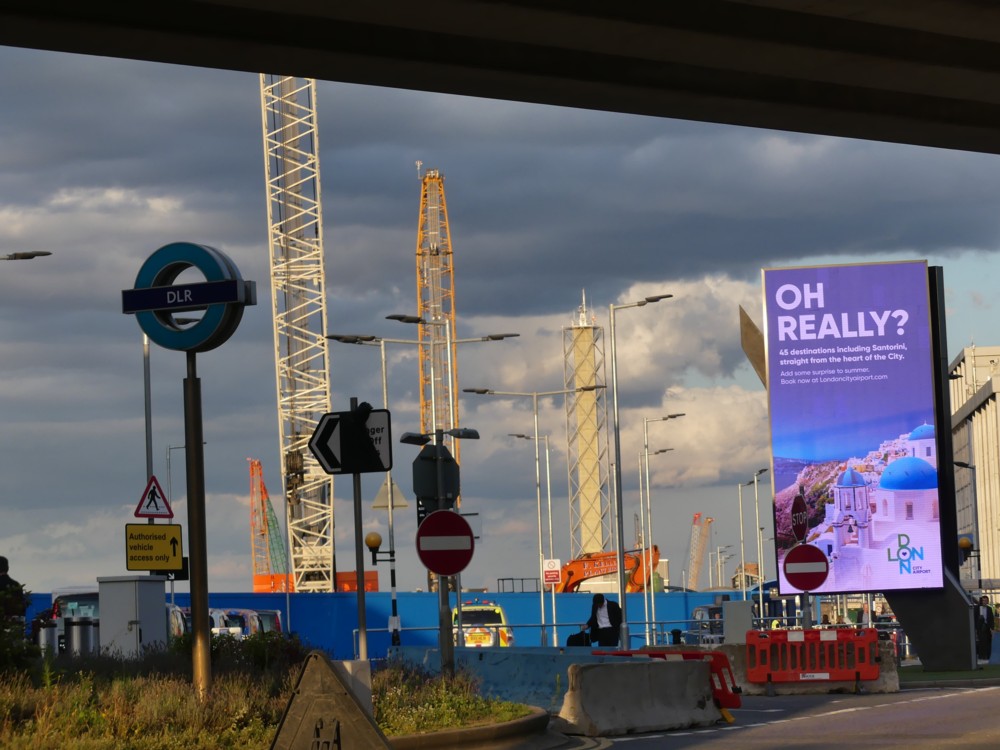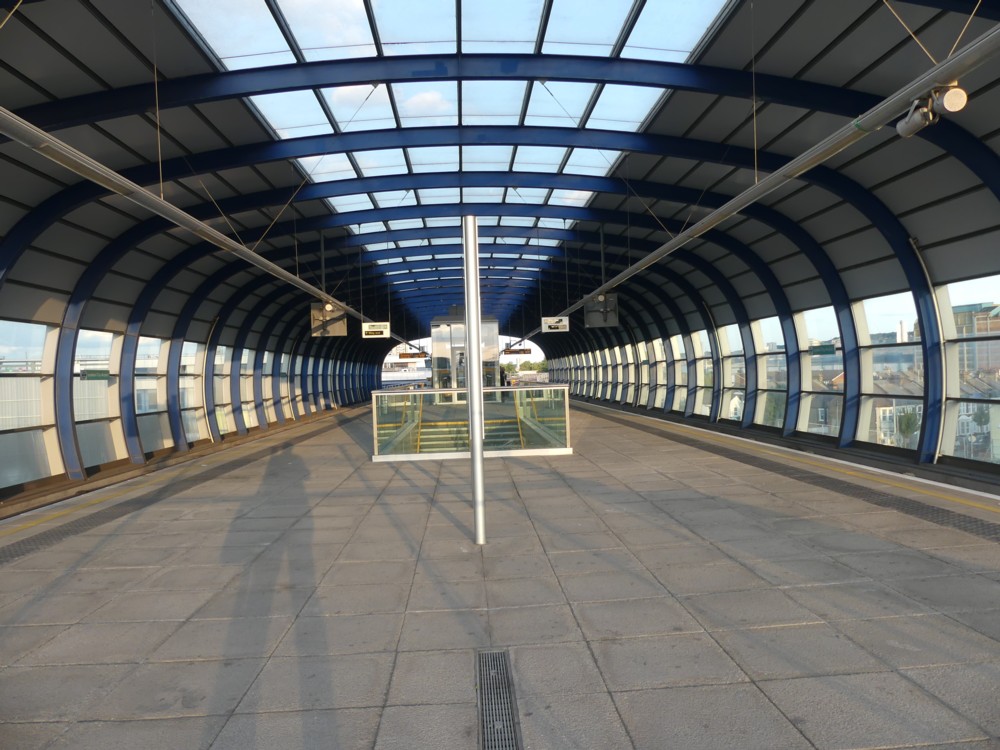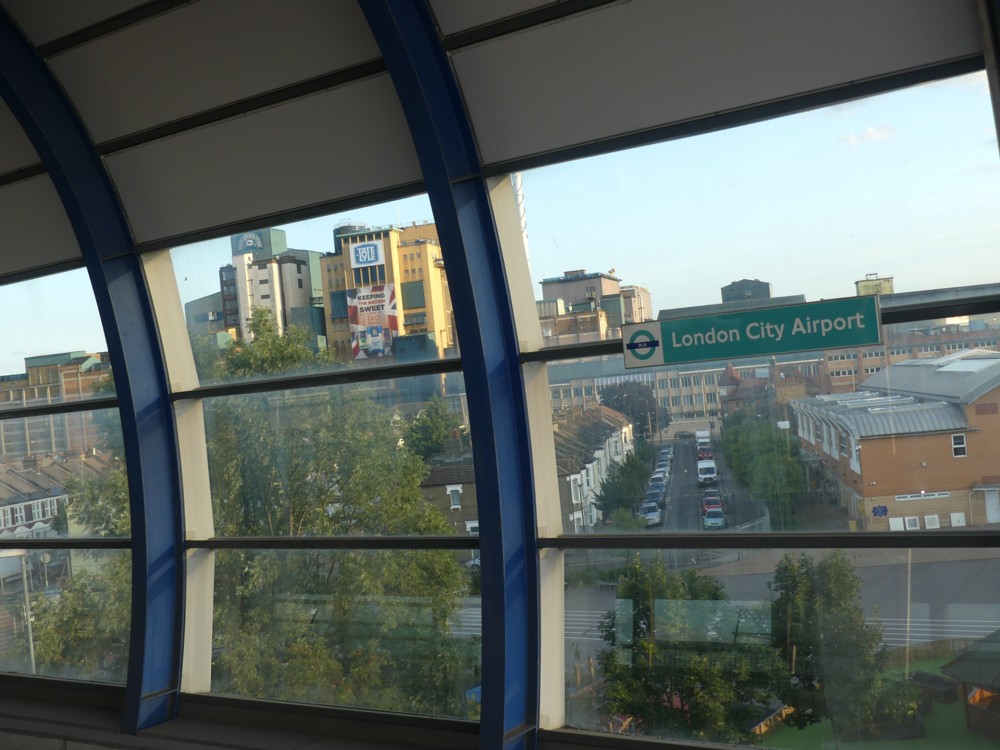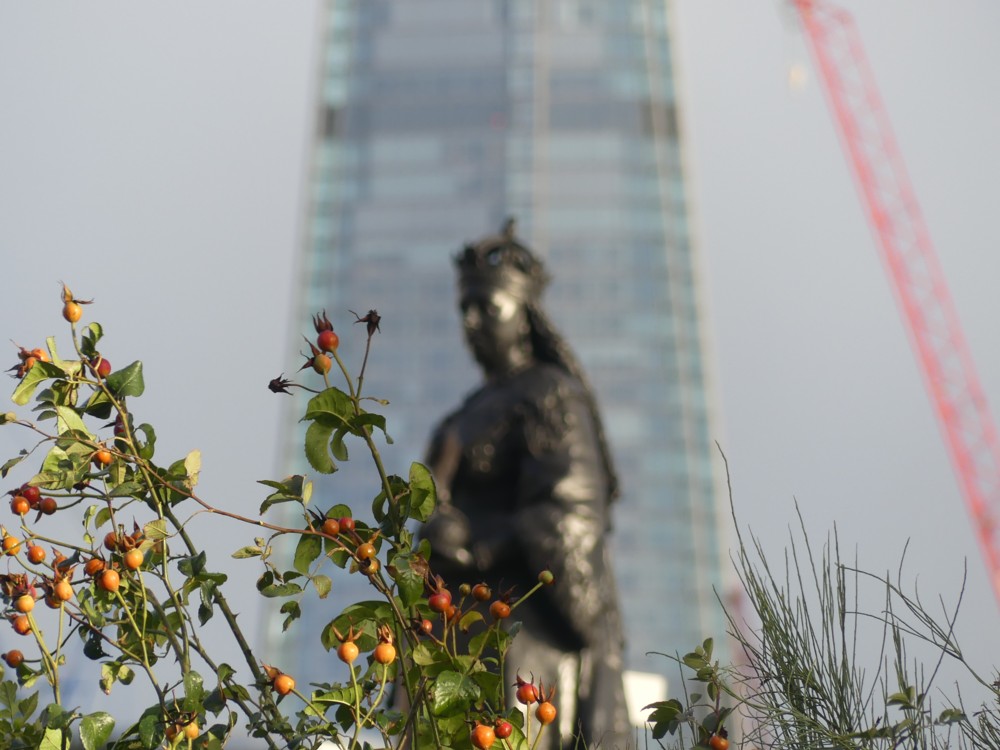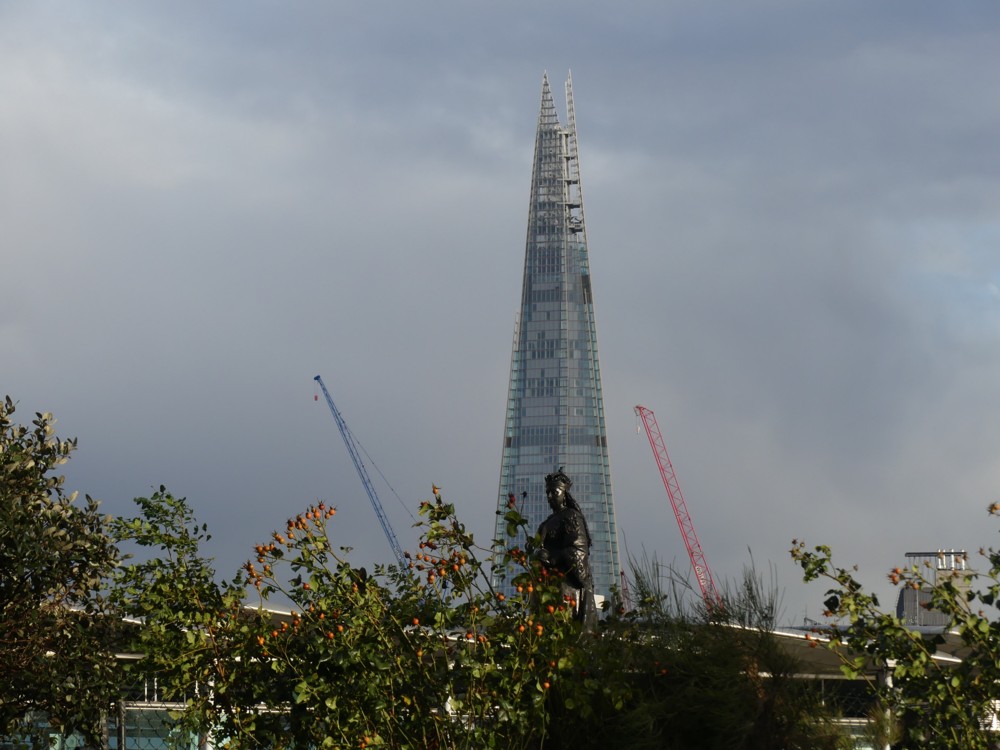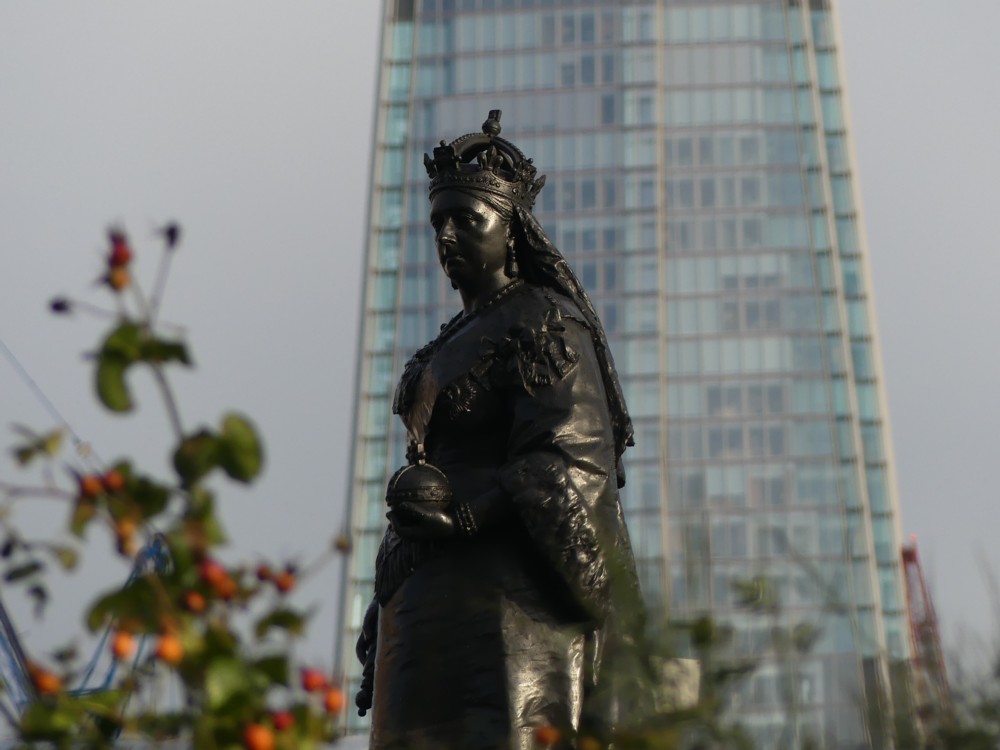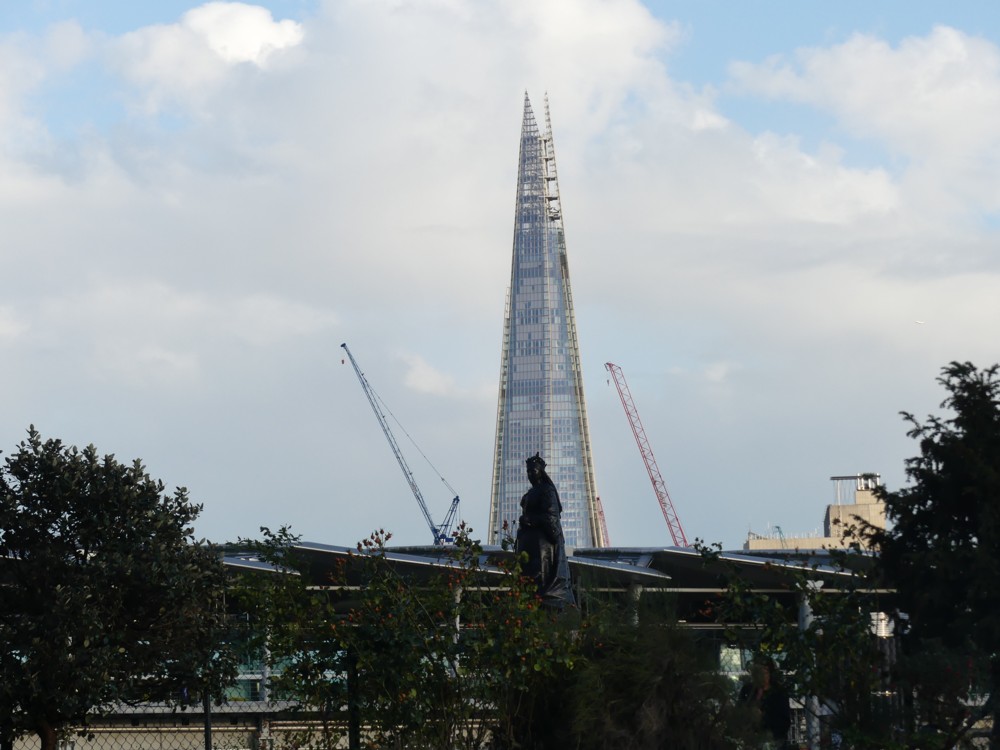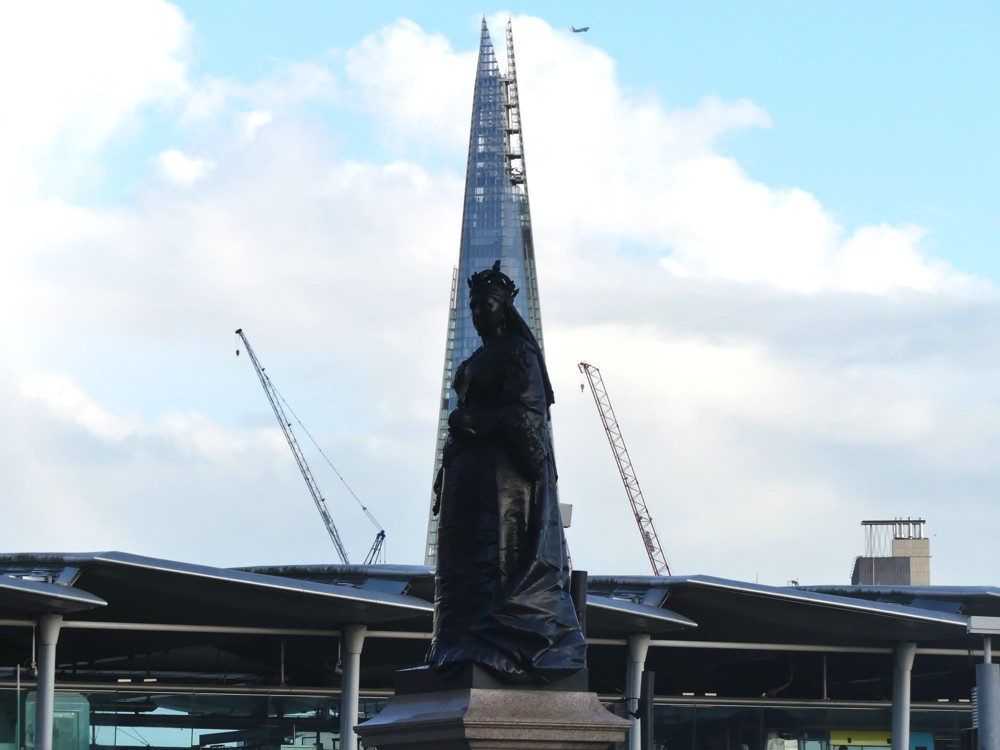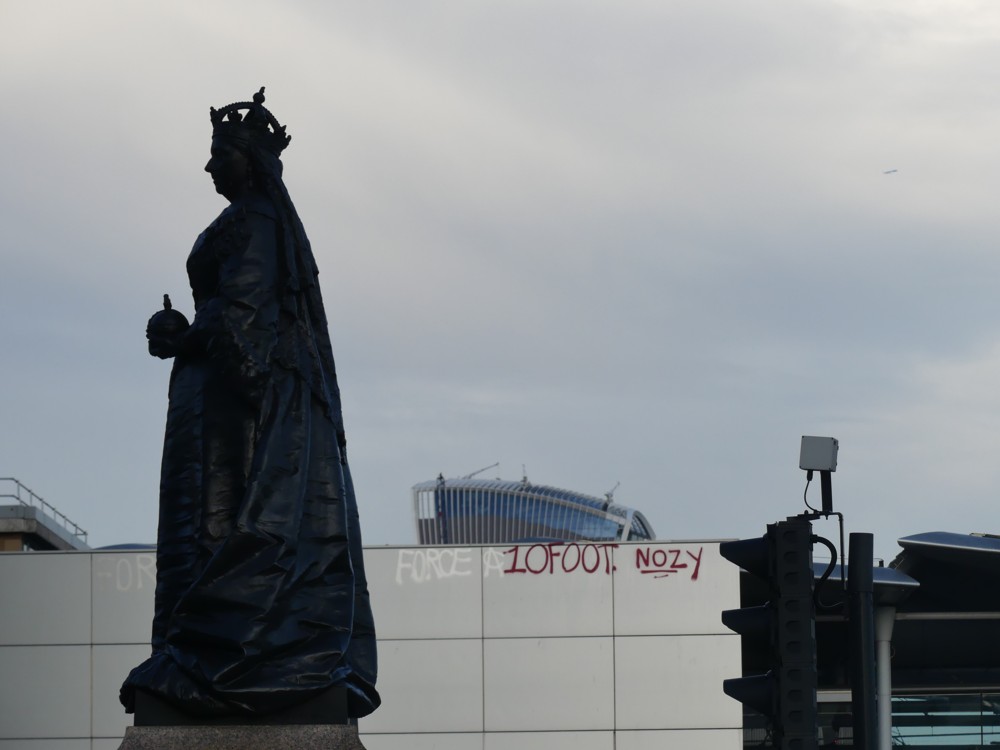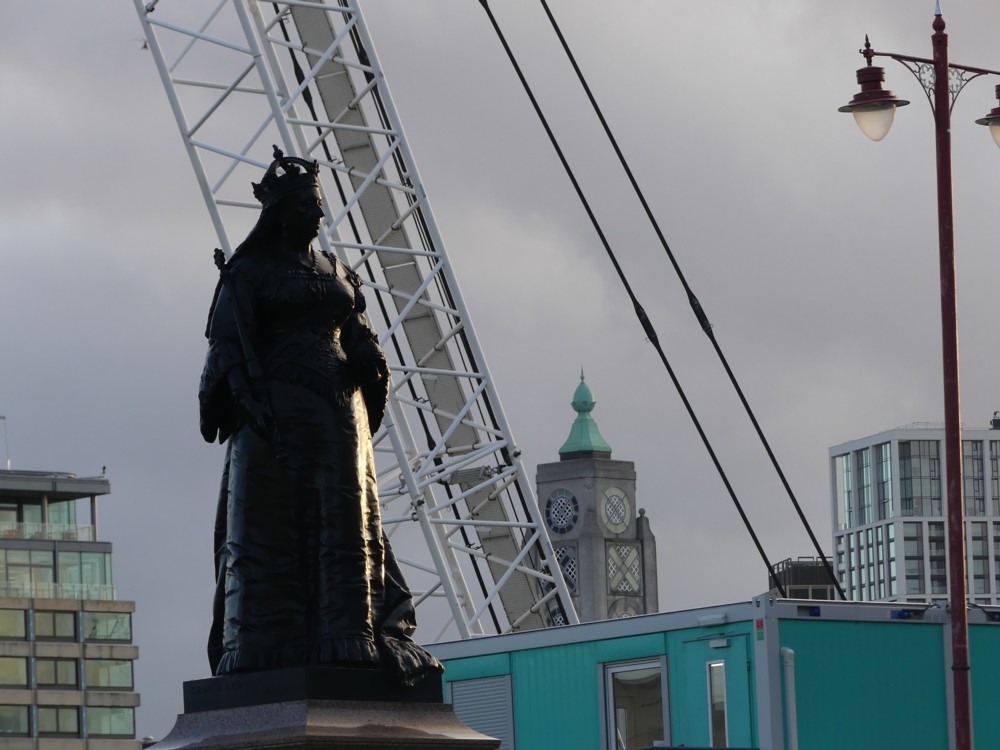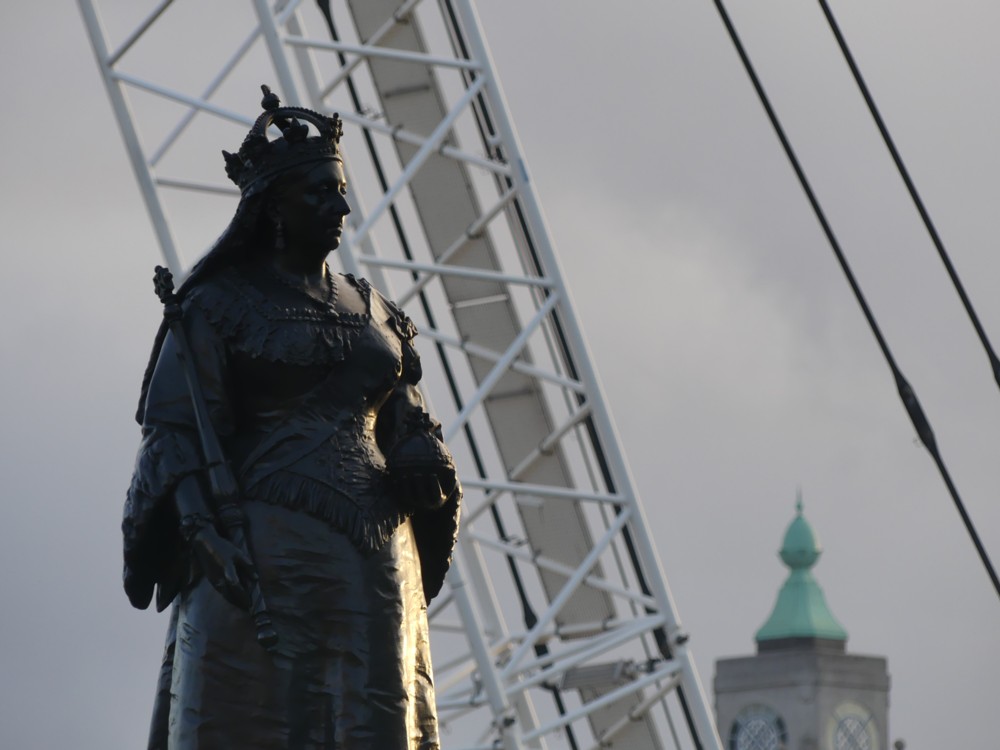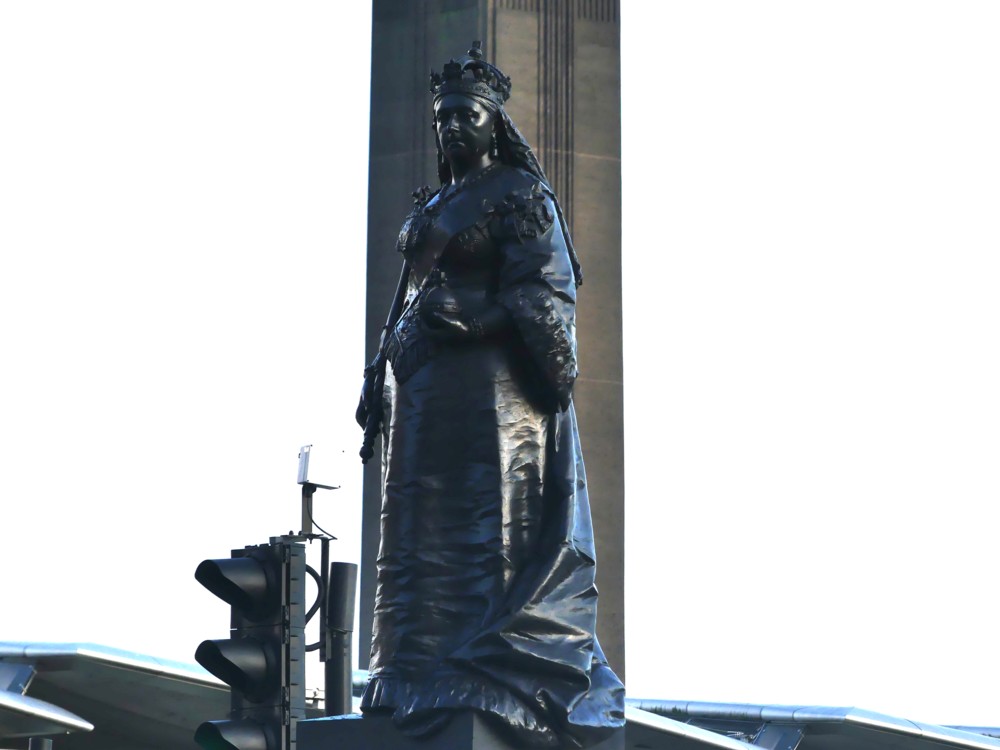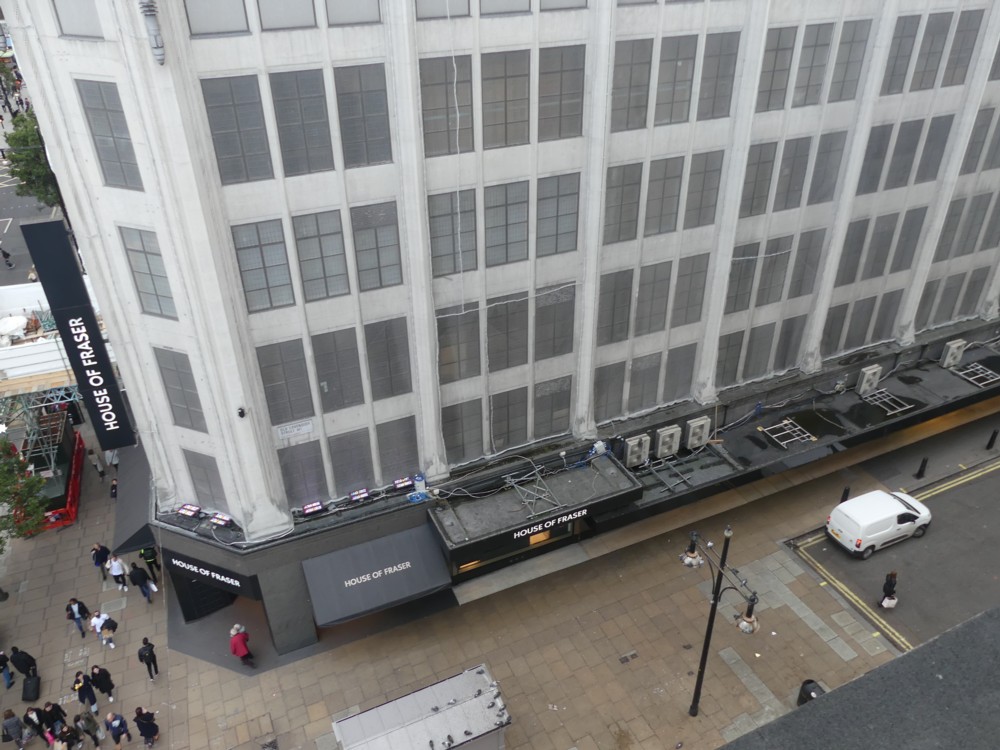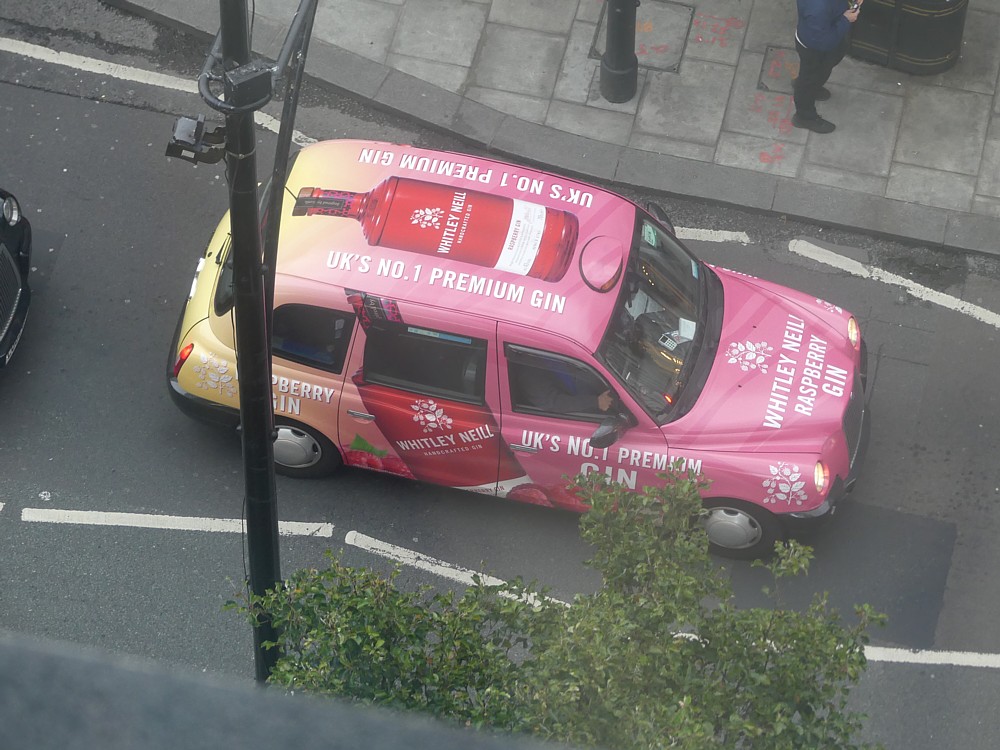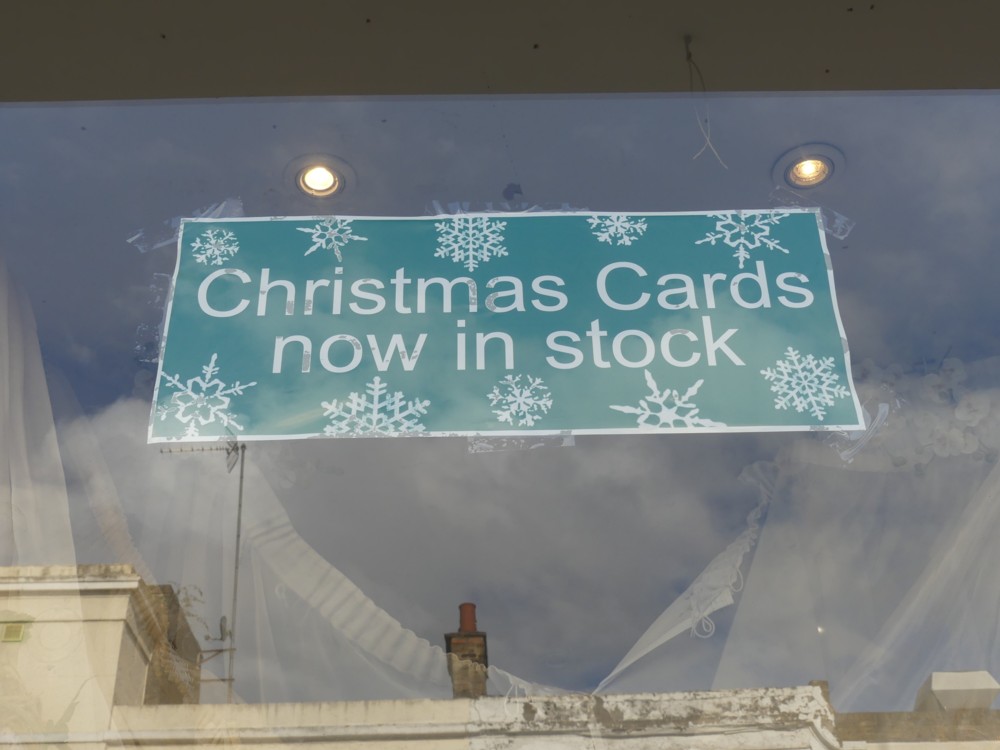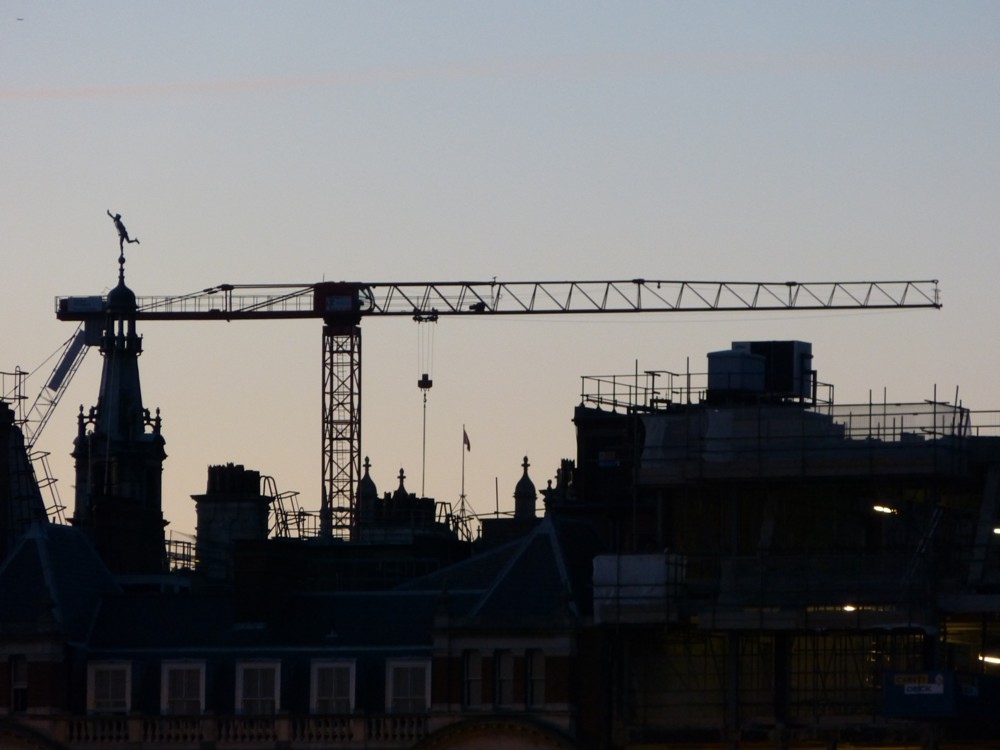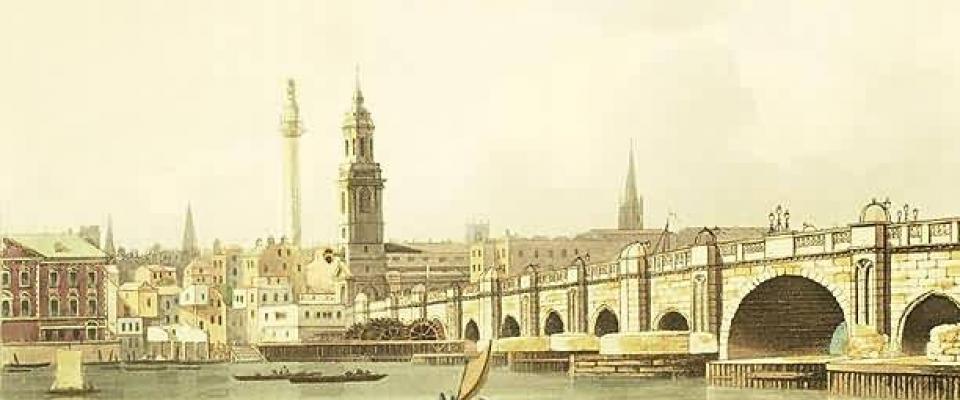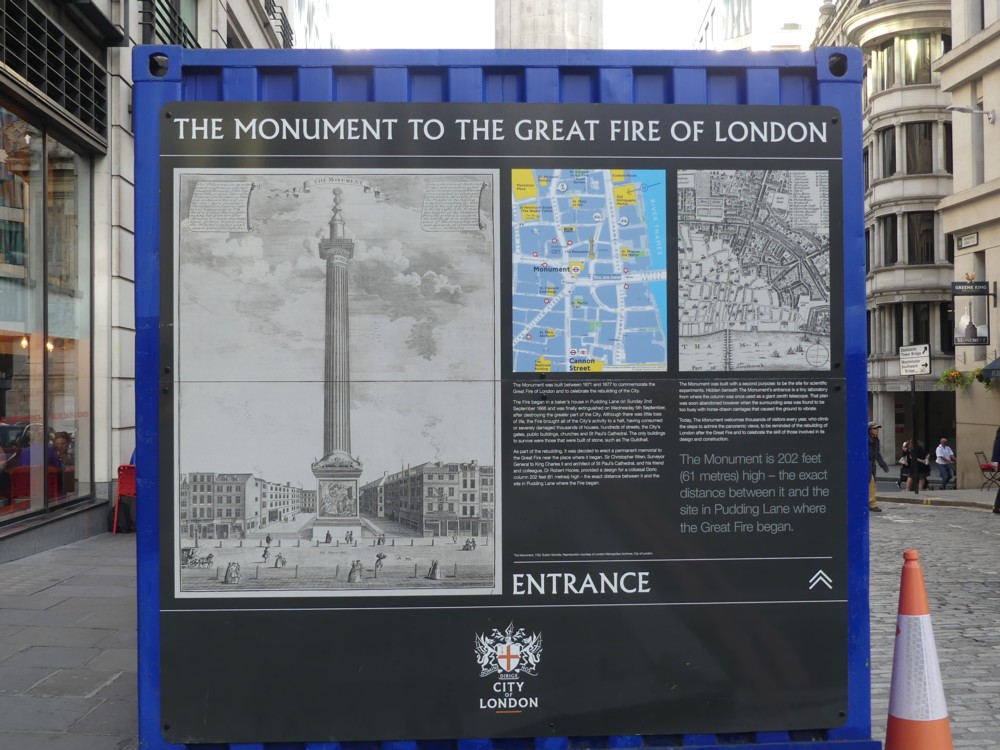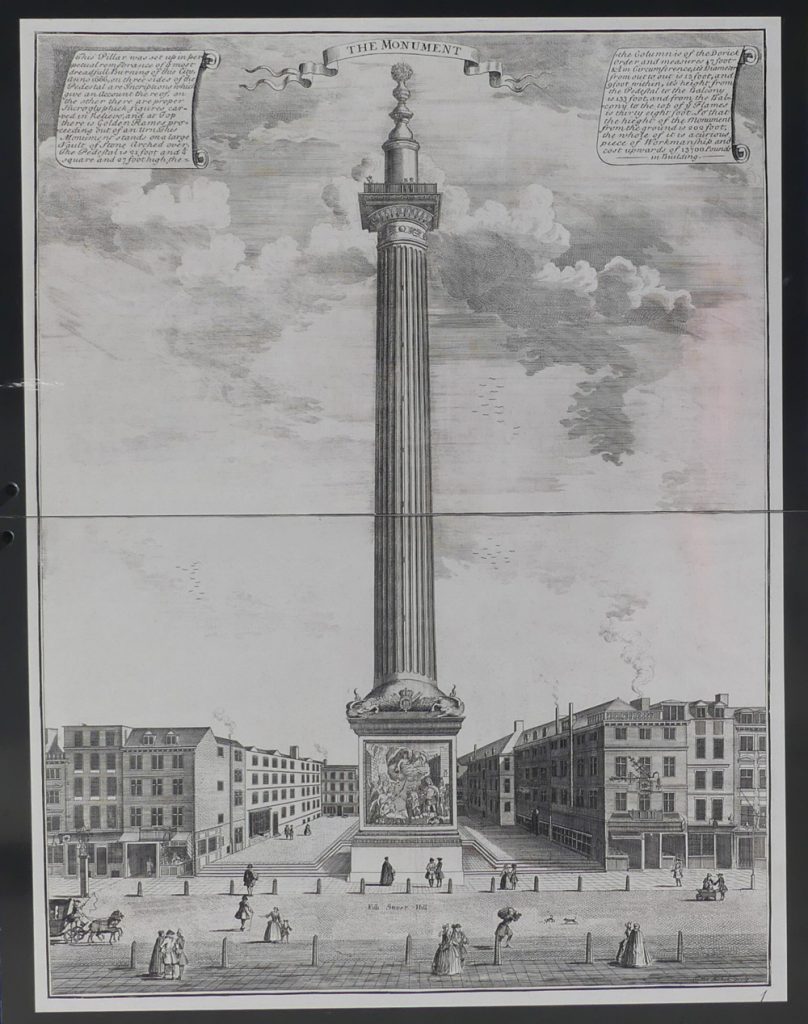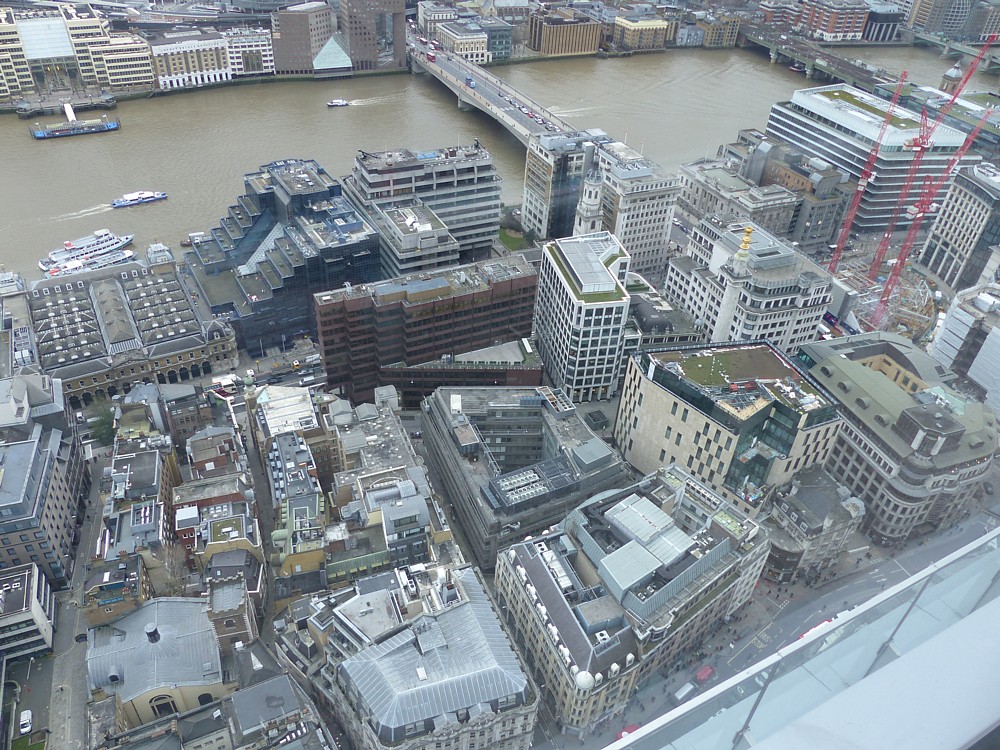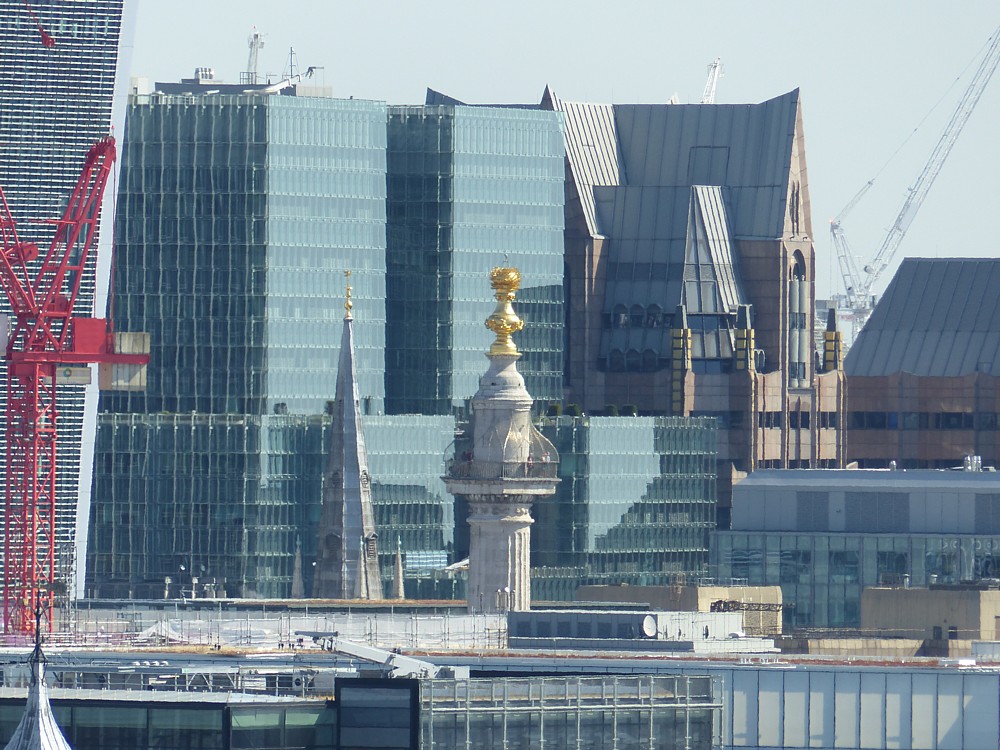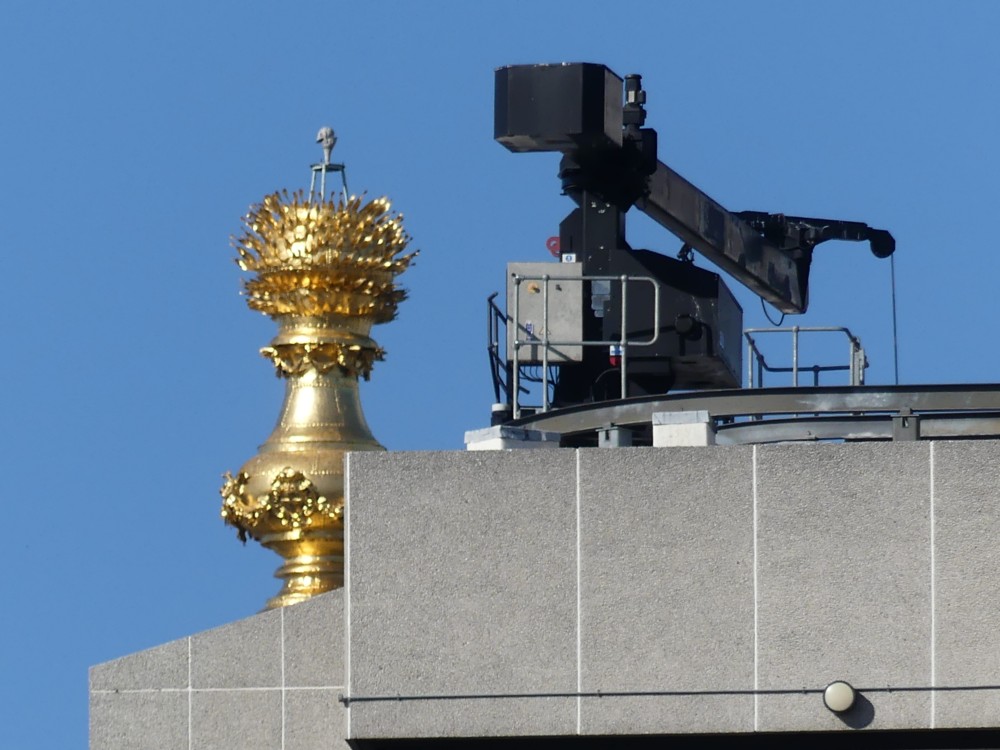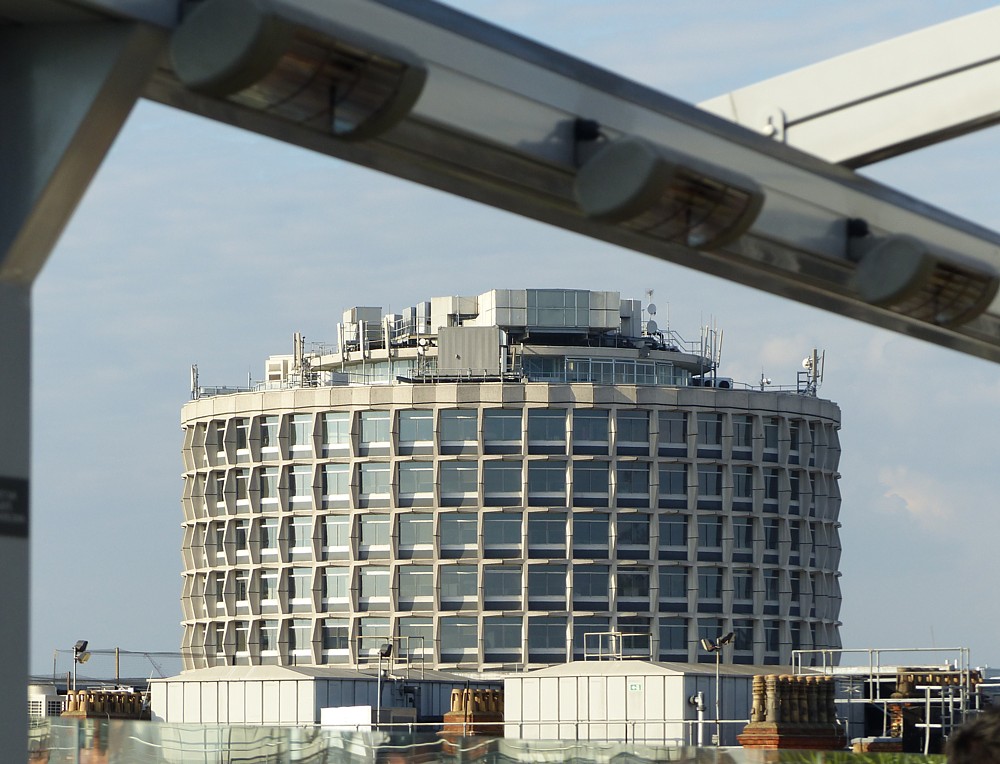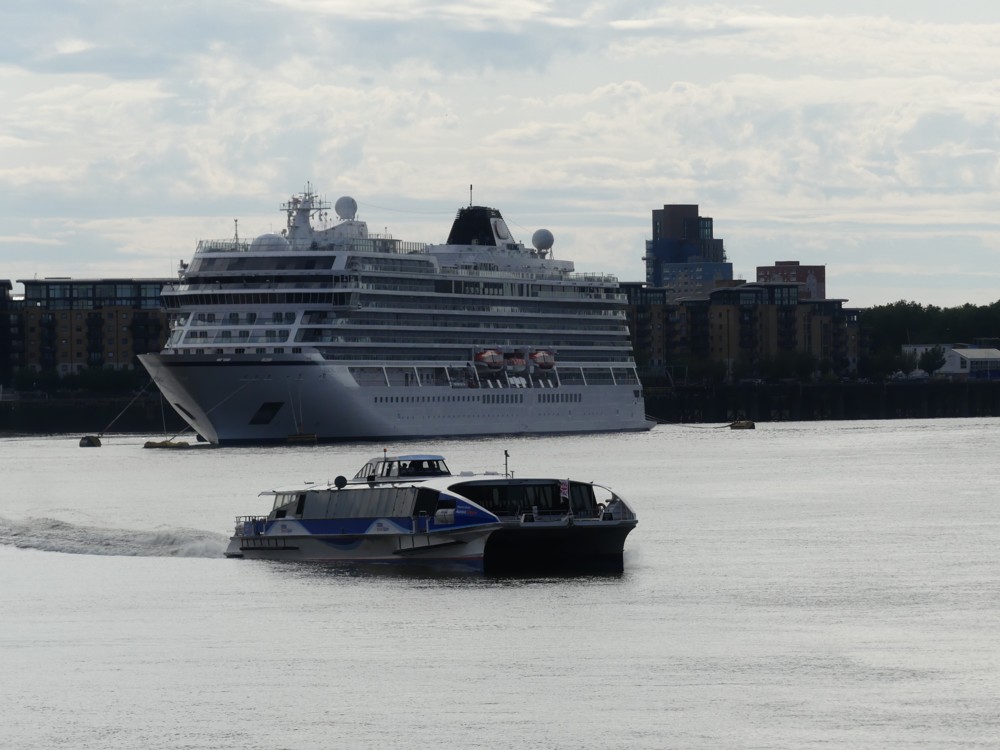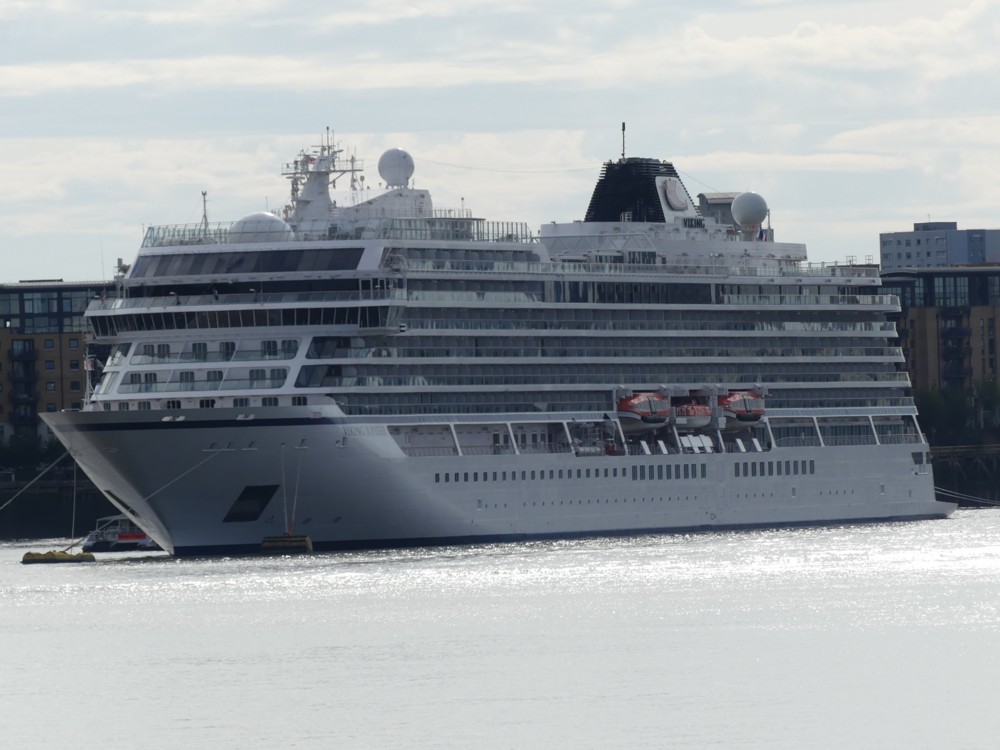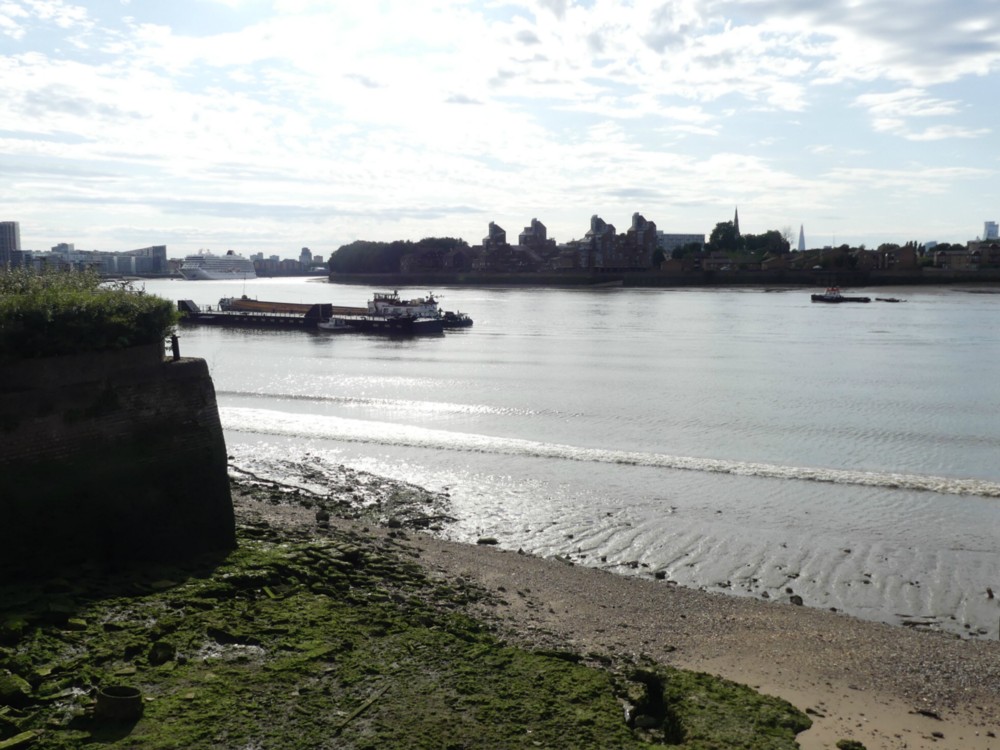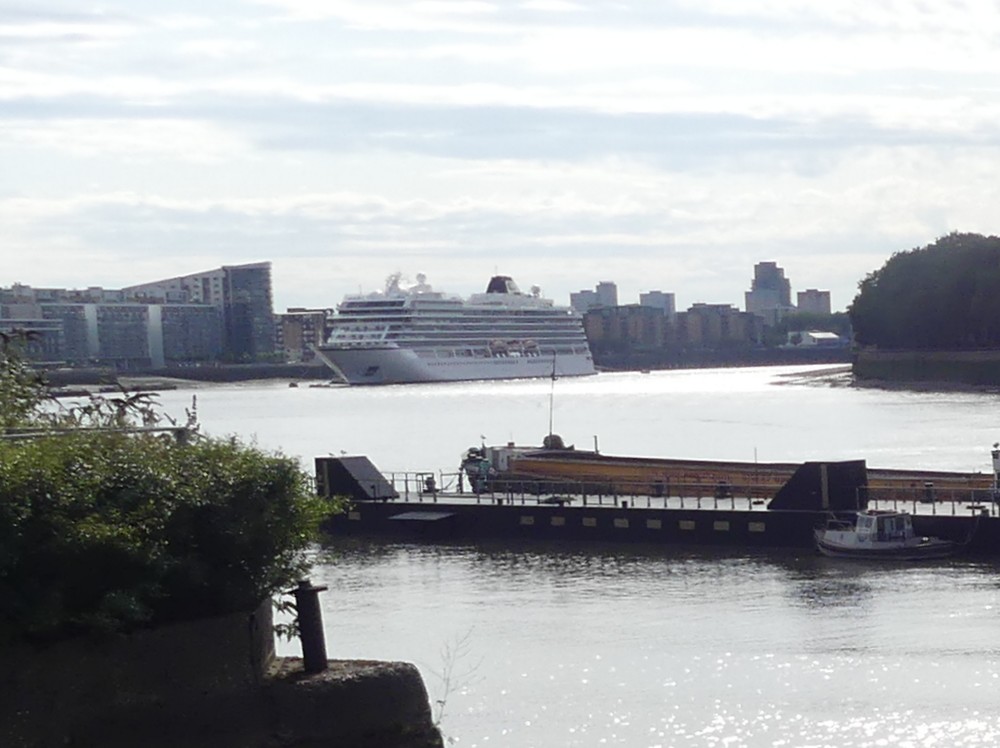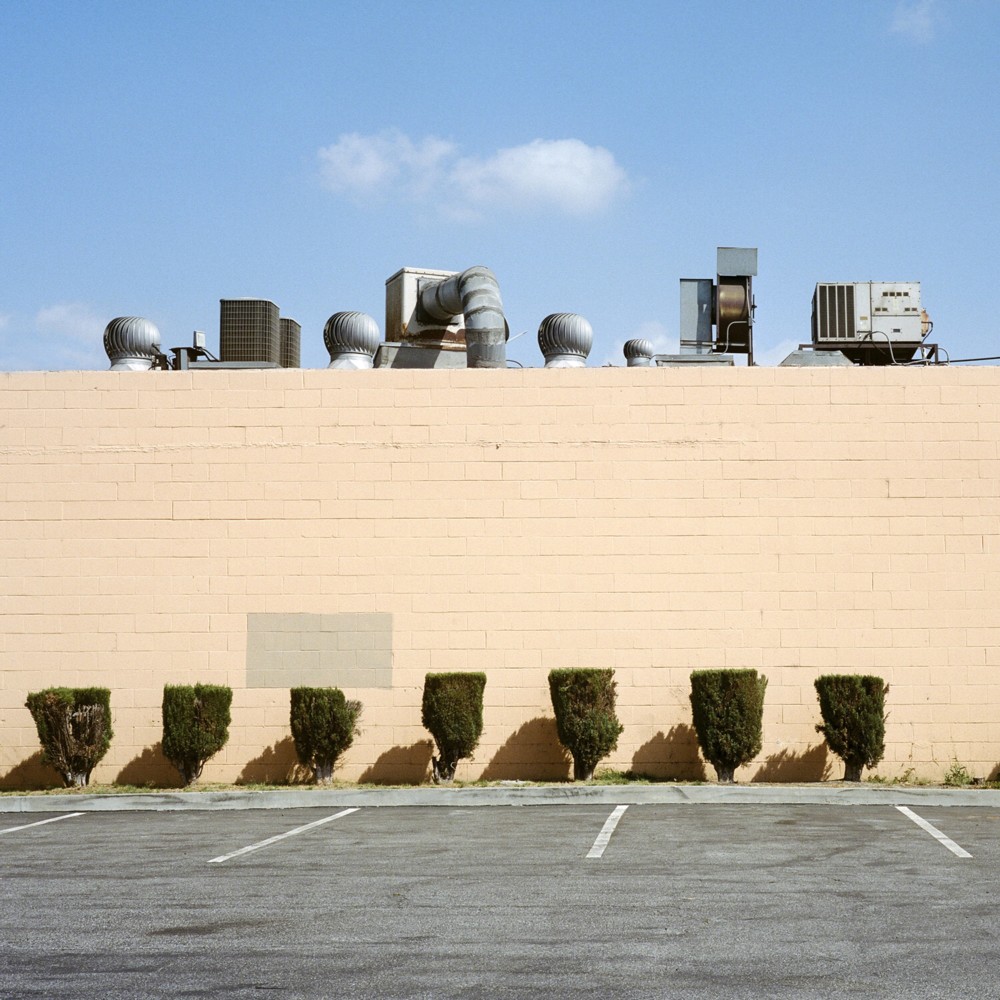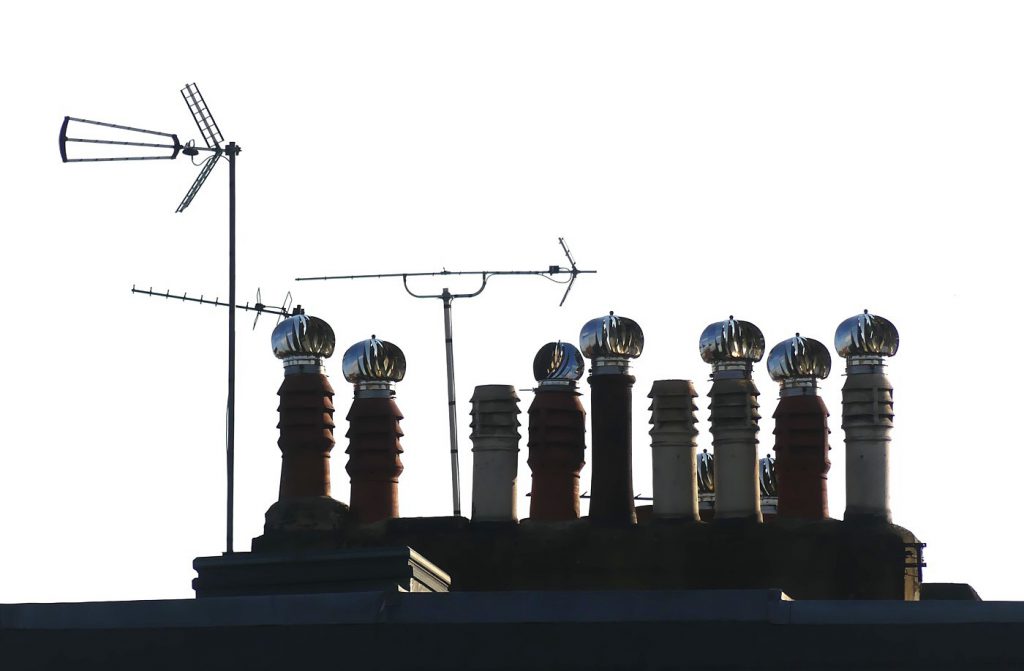A little bit of spotting I mean. The ship itself was rather big.
Remember this map, showing where I went walking from Maze Hill station to YOU ARE HERE, and then went north to the Dome:
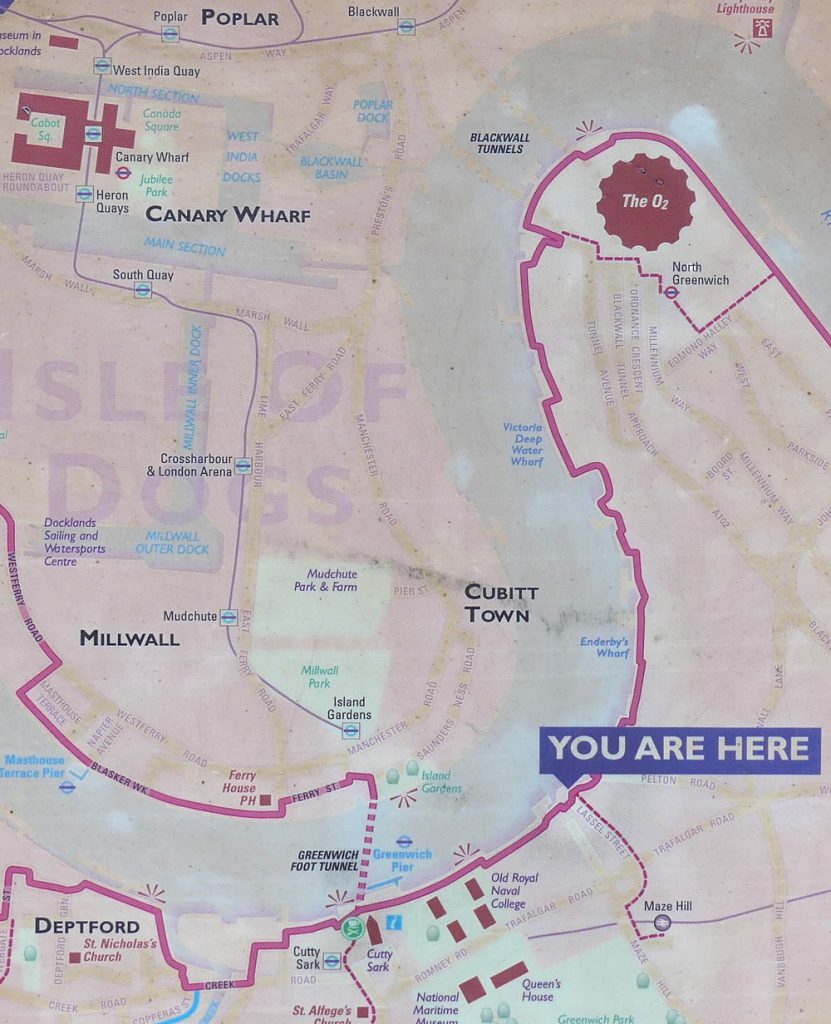
The original idea of that posting was to say where I was, and then tell you about something rather interesting I saw from that spot. But by the time I had finished rambling on about the sign of which the above map was a part, I already had an entire posting, about the sign.
But yes, there I was at YOU ARE HERE, and rather than concentrating all my attention on the view of where I was about to go, I also looked west. Here’s what I saw:
That’s right, one of those huge and impossibly top-heavy-looking cruise ships.
I tried to think when I had ever seen such a vessel in London before. I have a very vague recollection of having once such a thing, maybe, but nothing for sure. Well, well.
I then turned right and north, and in among all the photos I took on my way north, I occasionally looked back at this ship:
Those being the same photo, one of the last I took, with, on the right, the bit of the photo on the left which shows the actual ship slightly more clearly.
And this was the very last photo I took of her, maximum zoom:
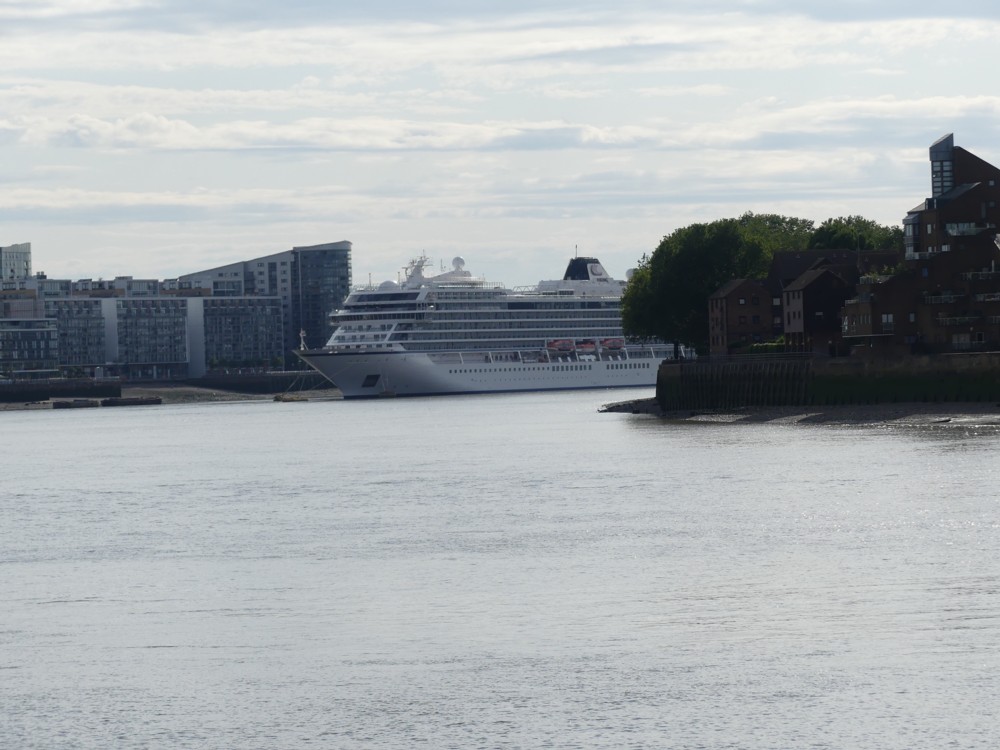
With that, I took a turn inland, dictated by the path I was following, and I saw no more of her.
When I got home, I became curious about this ship. Name? I look a closer look at one of my photos above, and found this:
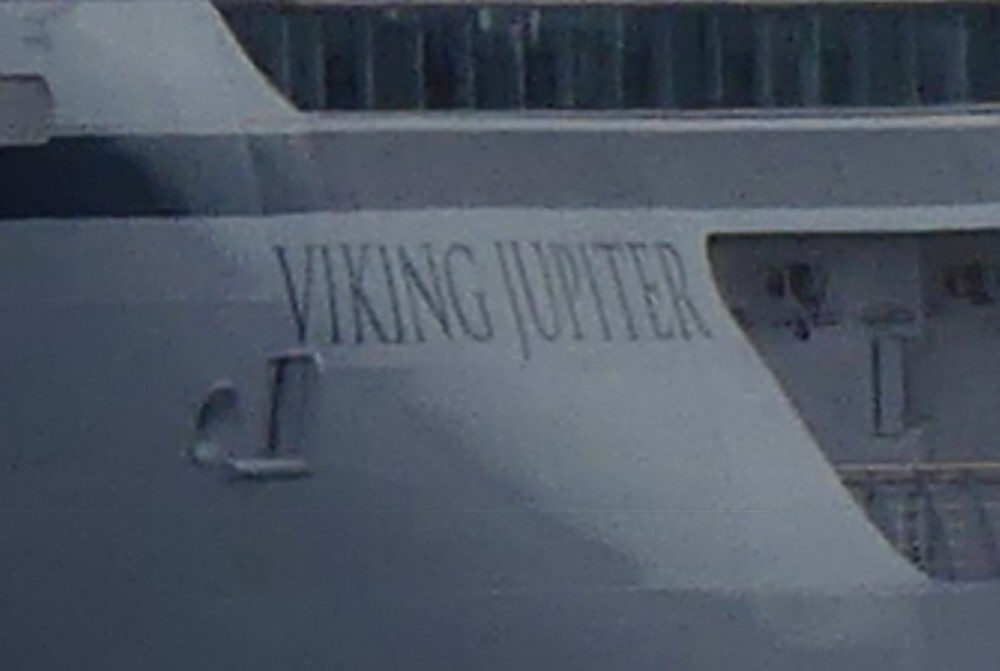
The Viking Jupiter. So, basically, that would be: Wotan. Just kidding. Viking’s the line, Jupiter’s the name. Fair enough. Just because an ancient (in both senses) historian might get angry about saddling a bunch of Norsemen with a Roman god, that doesn’t mean anyone else has to fret about this.
Then, in an inspired move, I wondered what Google Maps would have to say about the spot where I saw this ship. Here’s what came up:
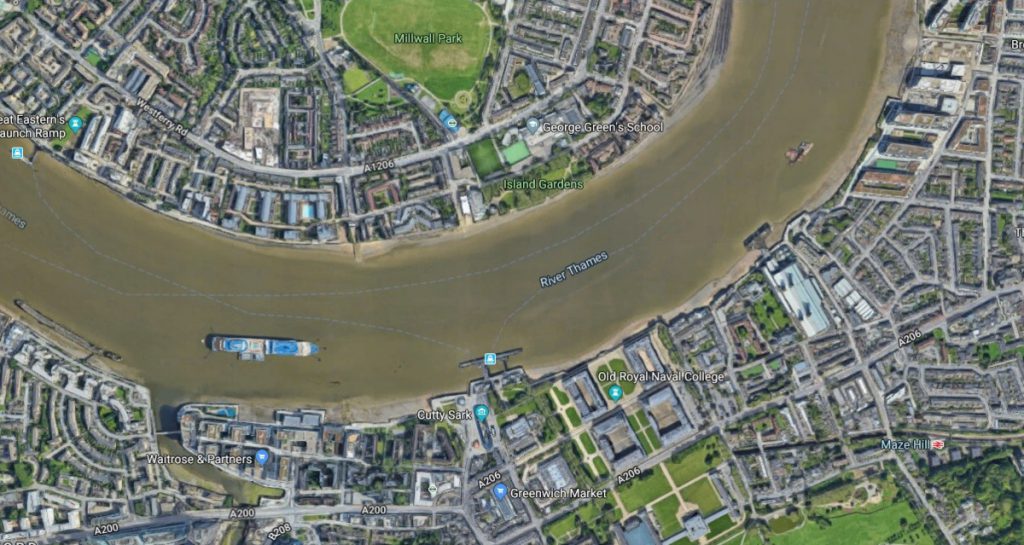
And in particular, closer-up, this:
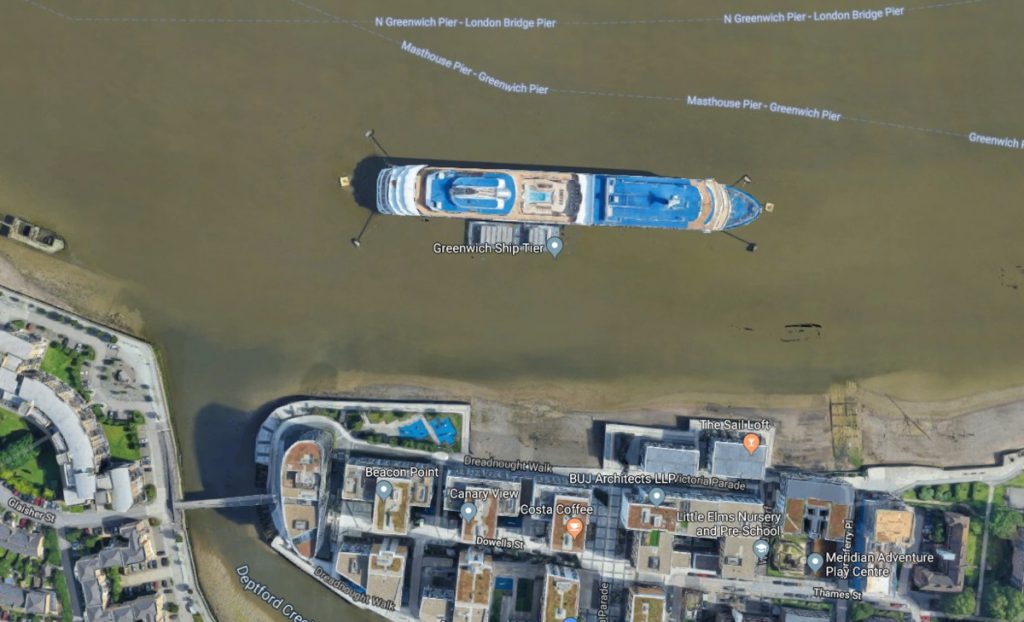
So, not just a pier of some sort, an actual ship. This would appear to be a regular London thing, with a regular pier for the ship to attach itself to in a regular spot.
Google google. Here is a map of the cruise that the Viking Jupiter was about to embark upon:
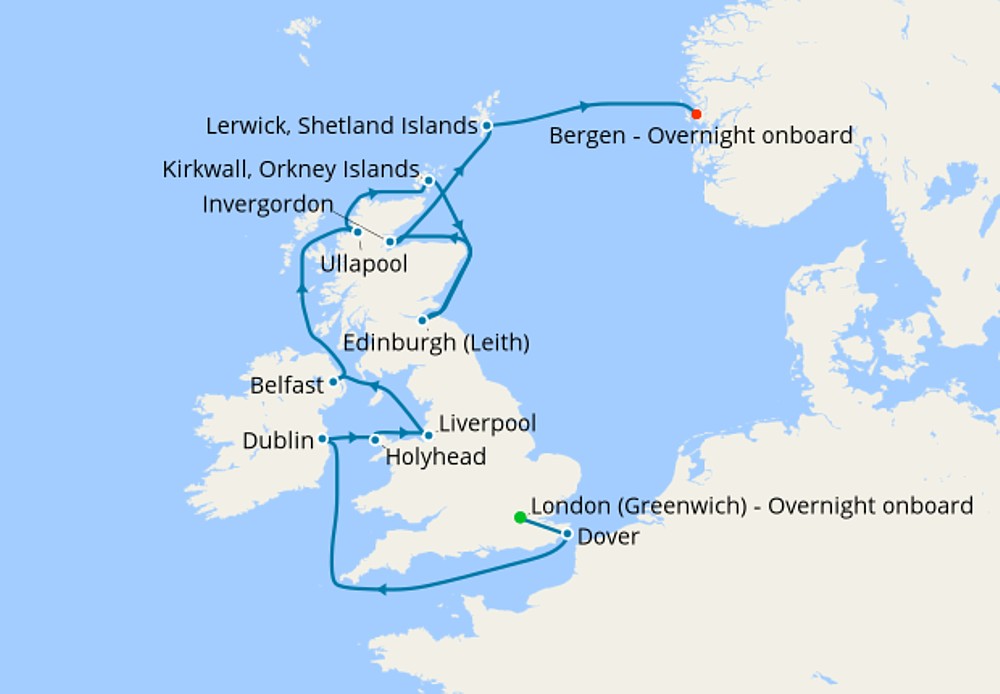
I had always thought that ships like this confined themselves to places like the West Indies or the Mediterranean. London? Liverpool? Apparently so.
Yet again, what I observed, and photoed with much pleasure, was something I would not dream of purchasing myself. Cruising on a big and over-decorated cruise ship like this is absolutely not my kind of thing. If they paid me £6,340 to do a cruise like this, I might even turn that down. (Probably not, but maybe.) But, I rejoice that London is part of this business.
I was there on the afternoon of July 29th, and “departure” was supposedly the 28th. But I think that may have meant the day when you had to leave your home in the UK, get to London and check in on the ship.
Photo and learn. Blog and learn.
New category, long overdue: maps.
I now rather regret that I didn’t scrap my original plan and turn left, and take a much closer look at this ship. Maybe next year.

